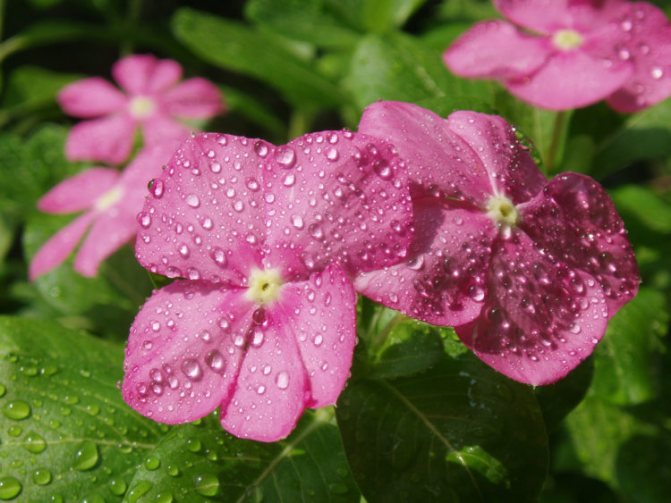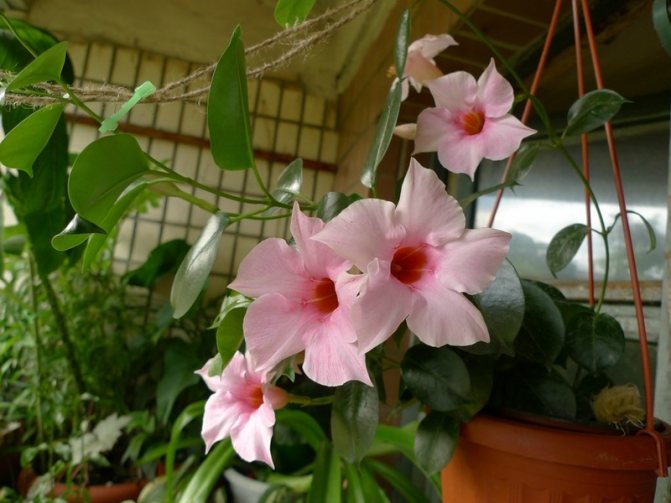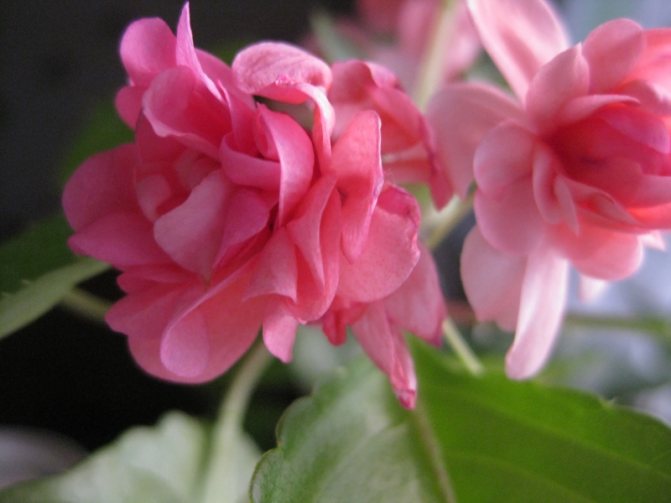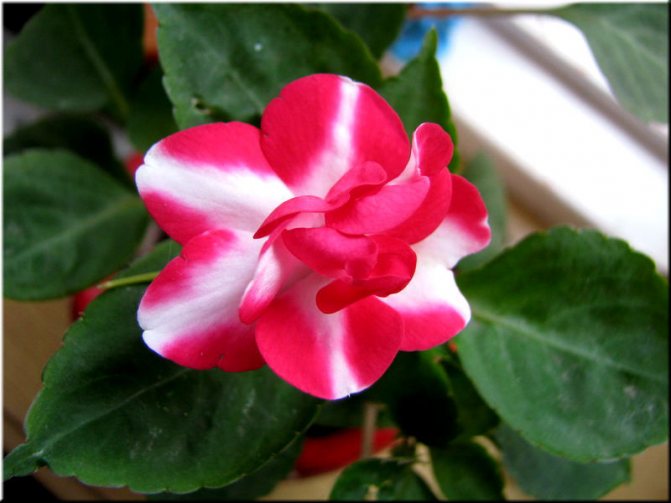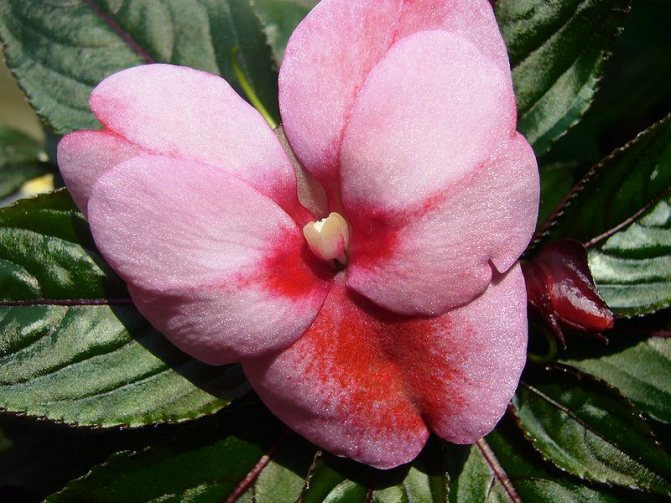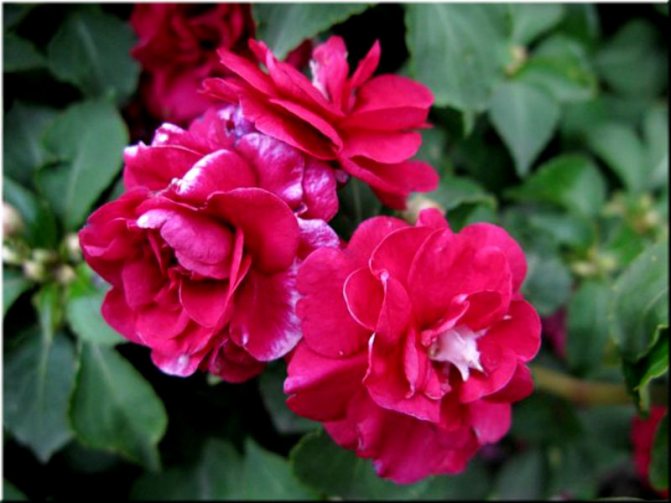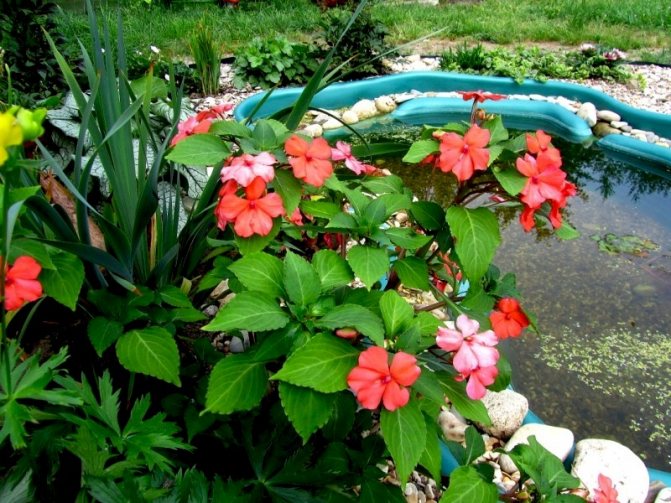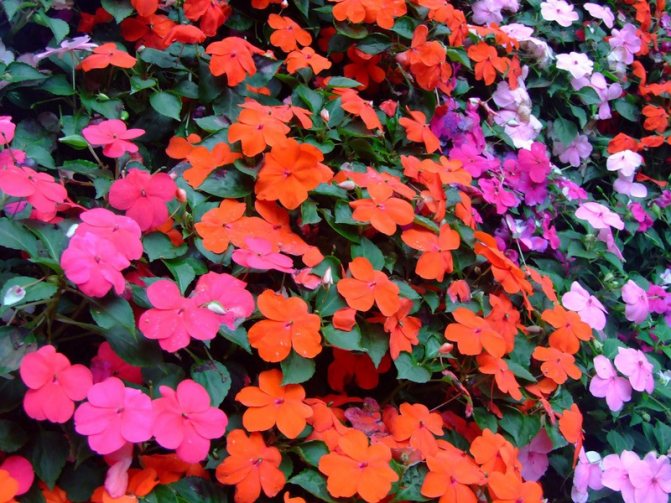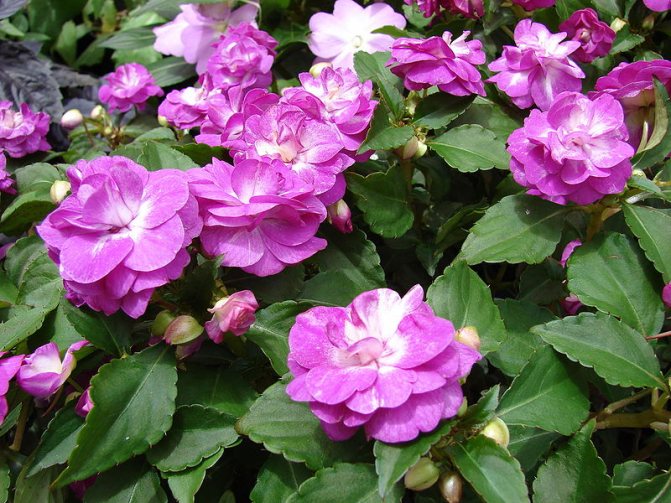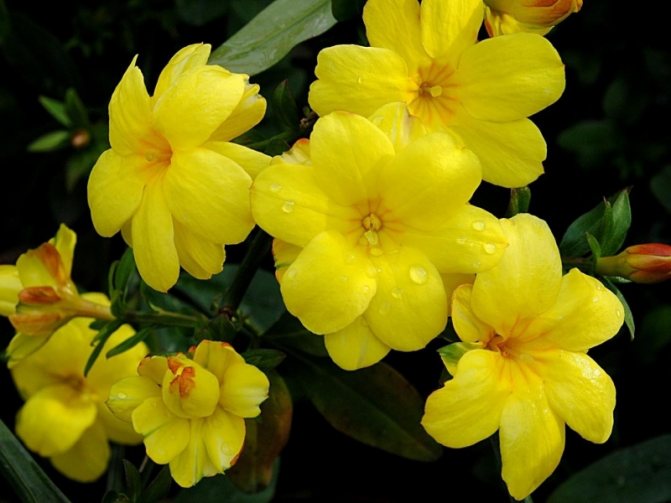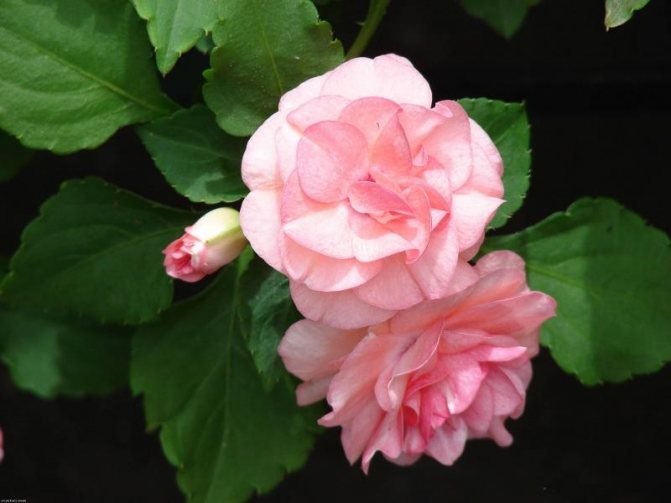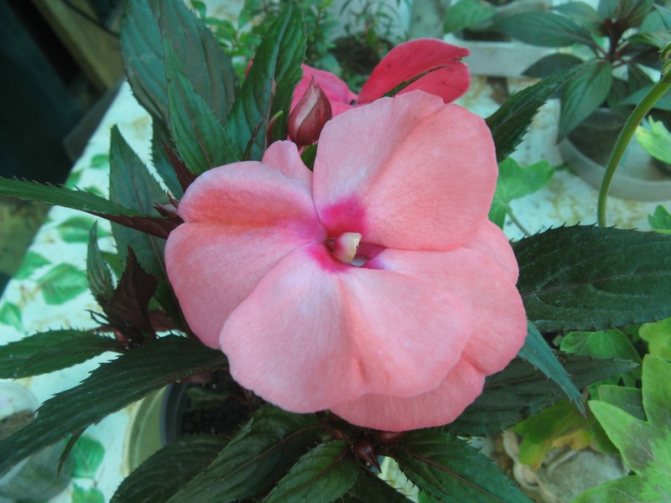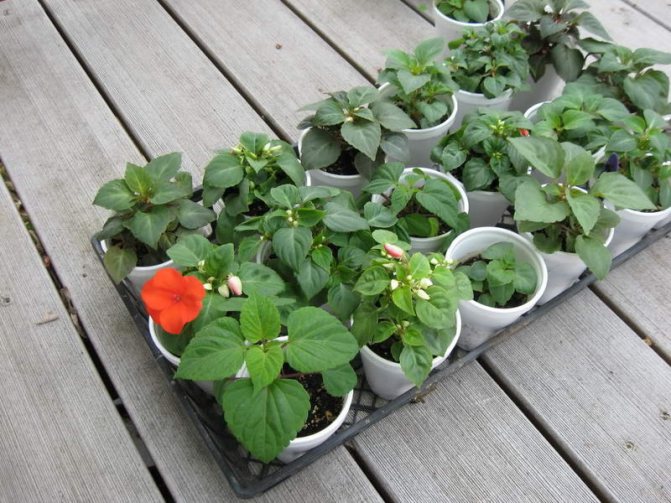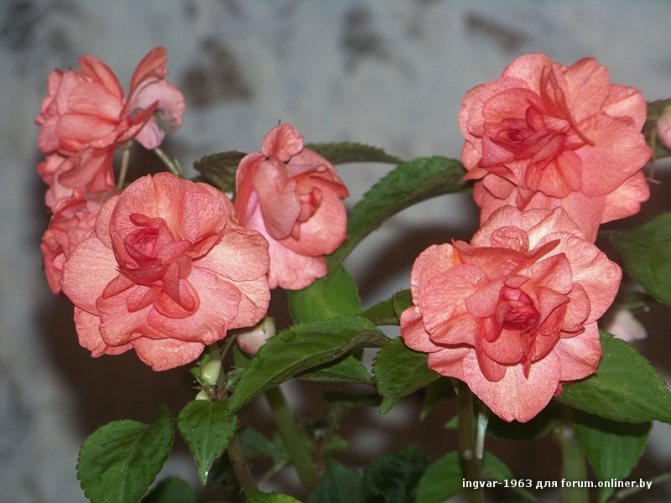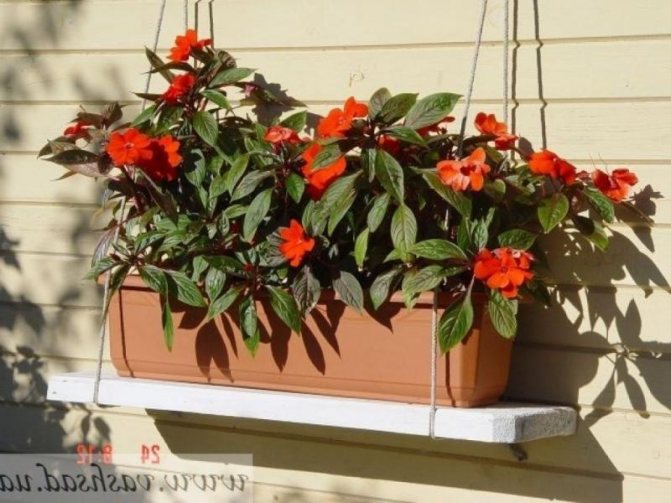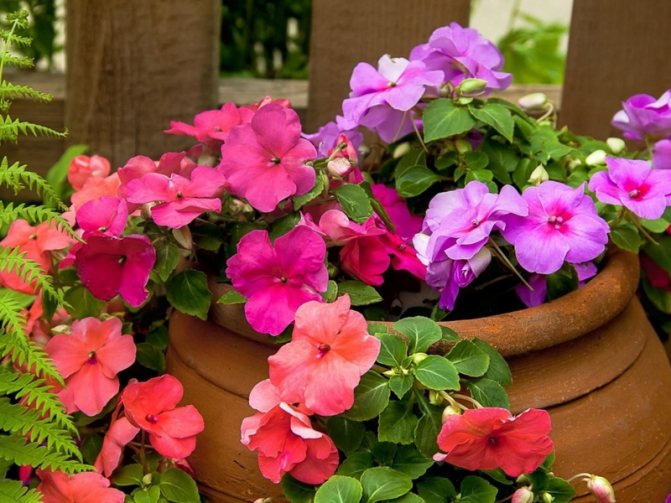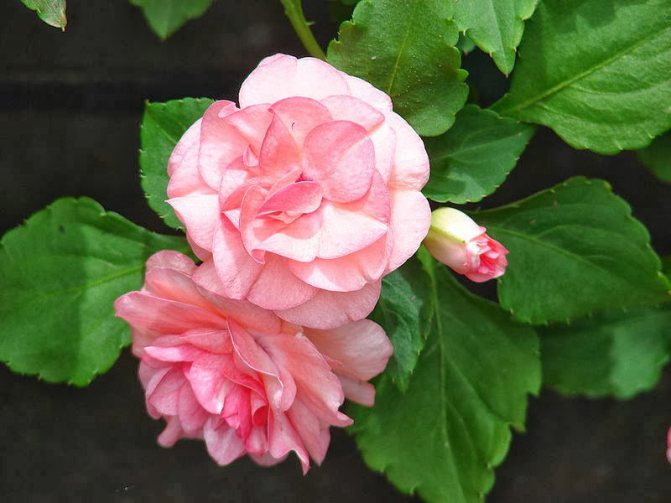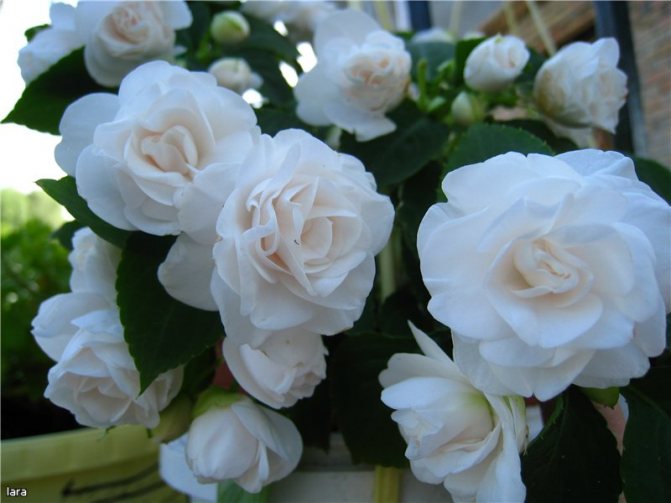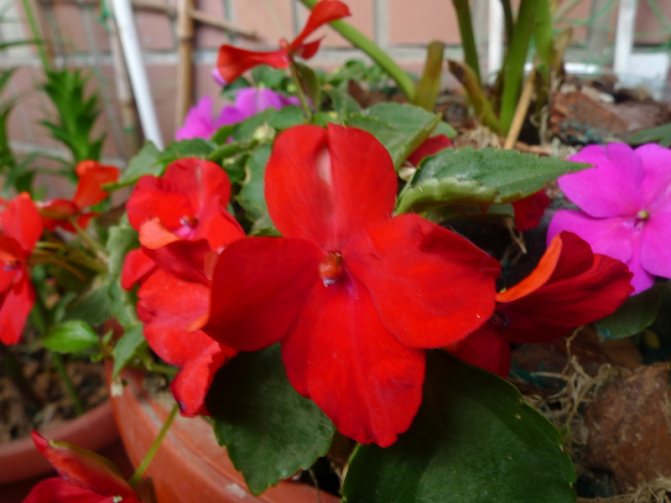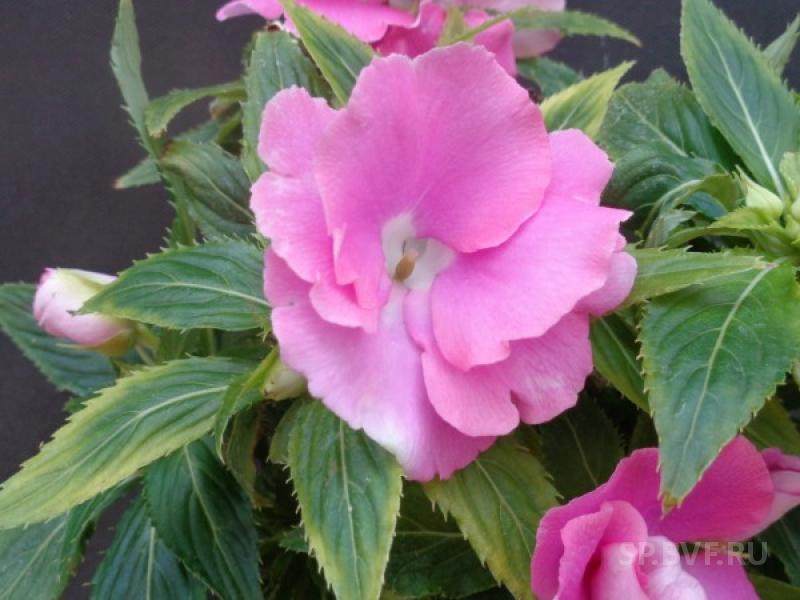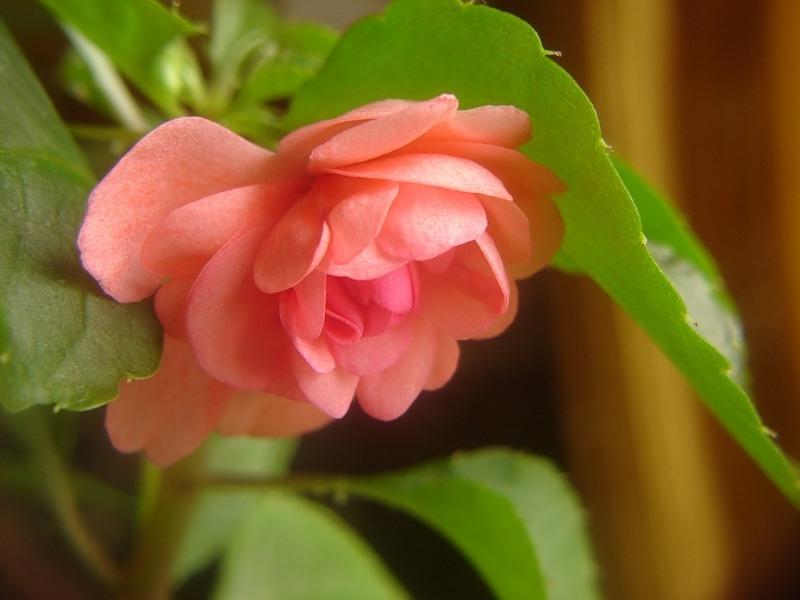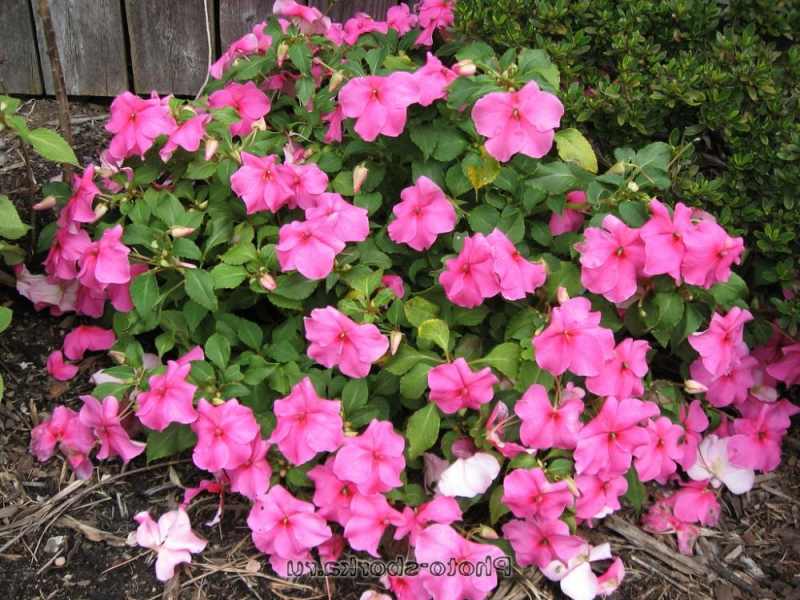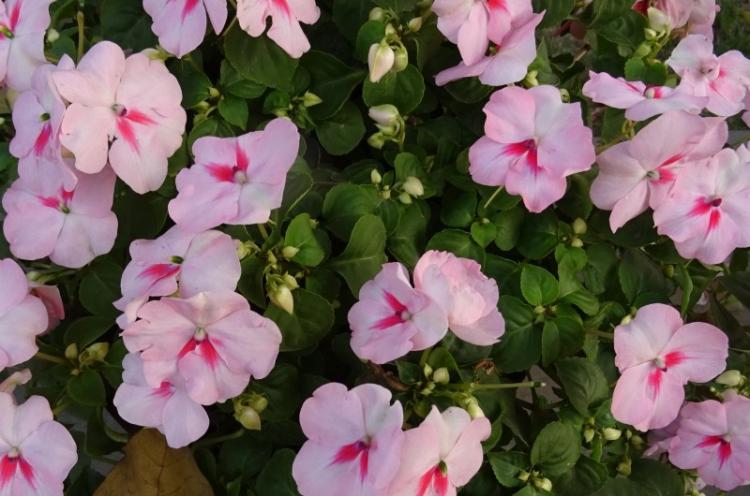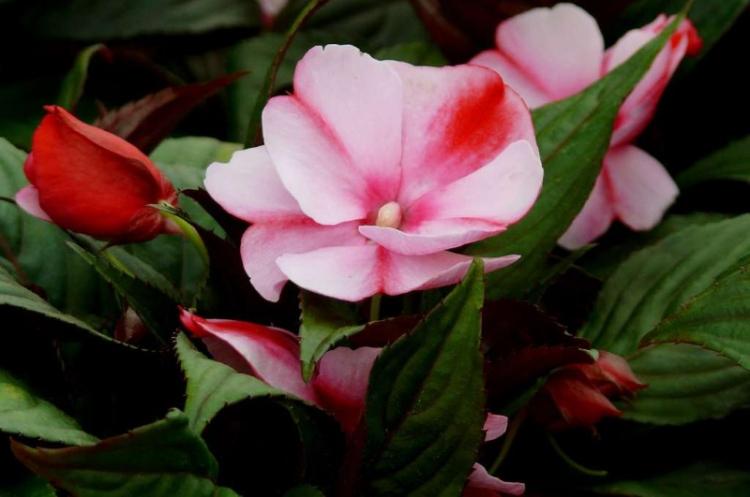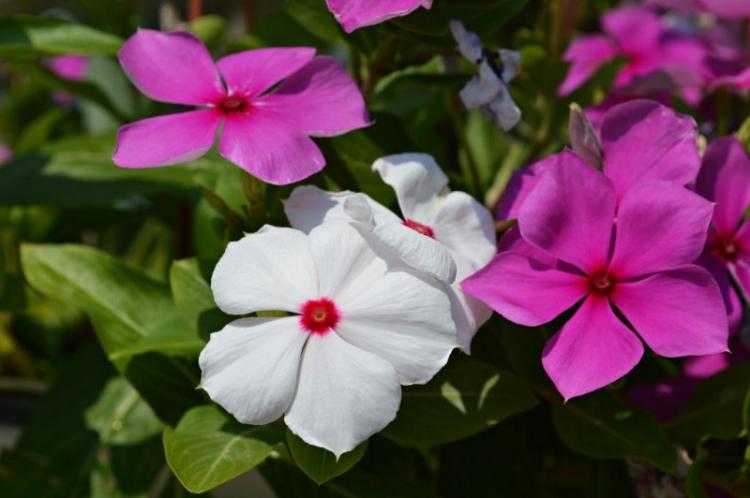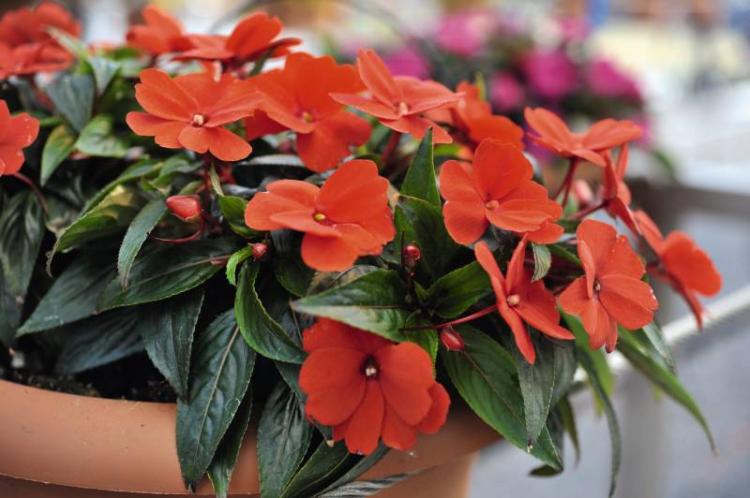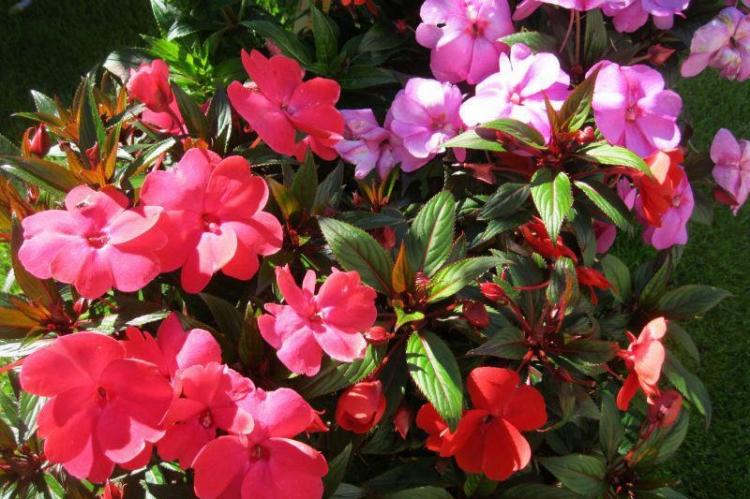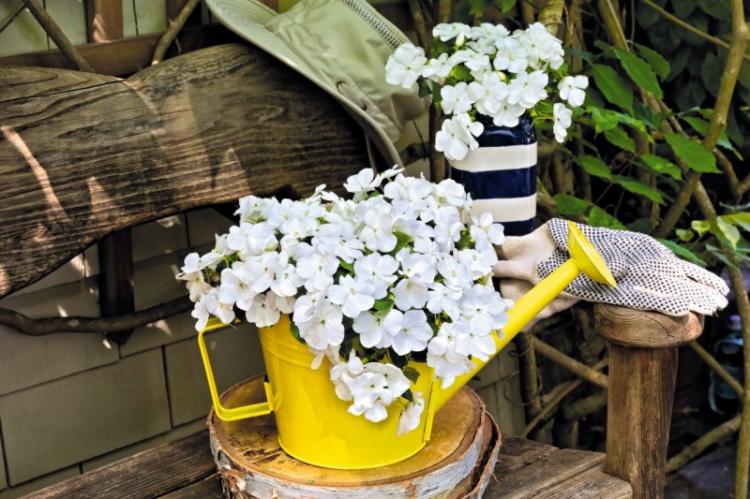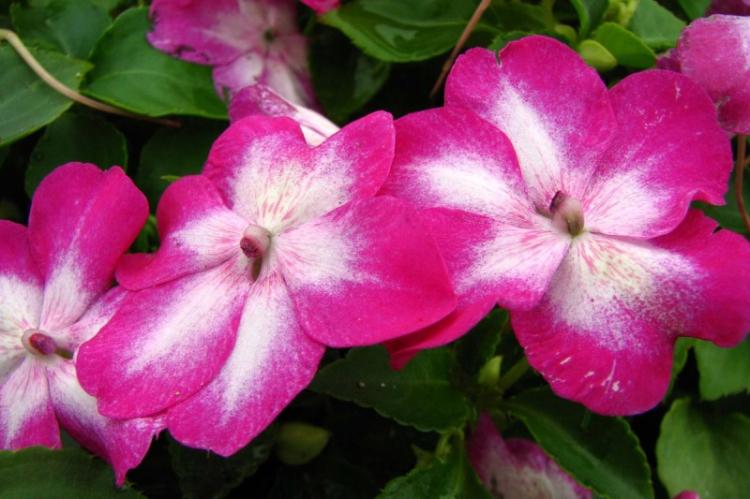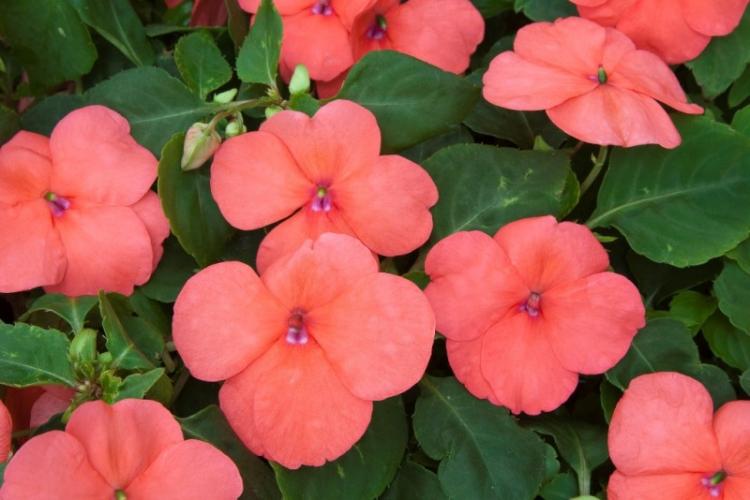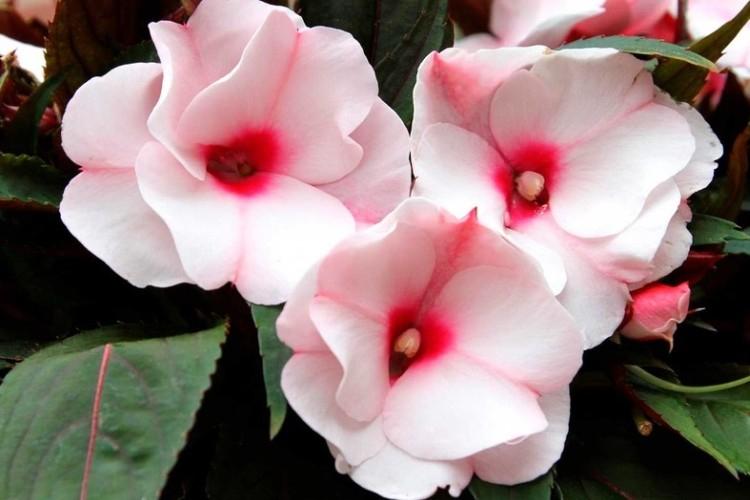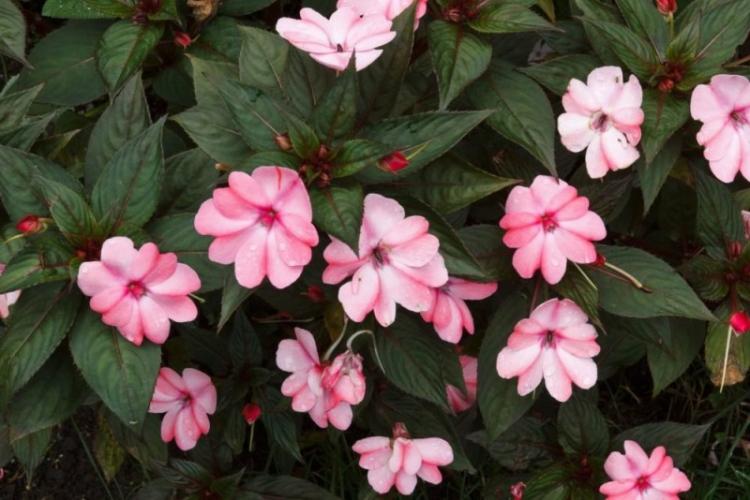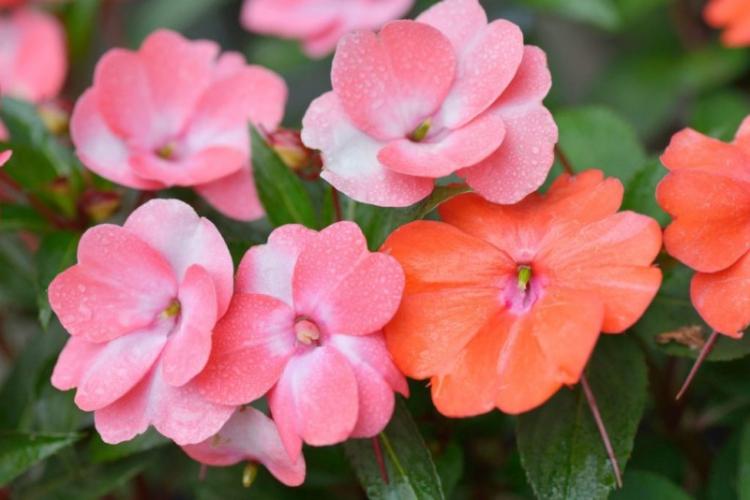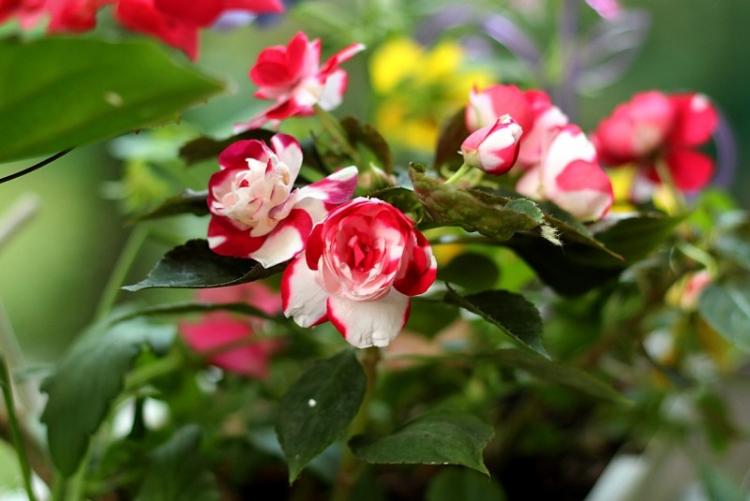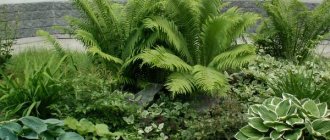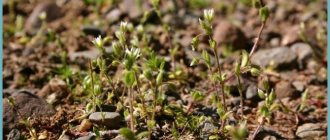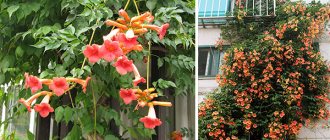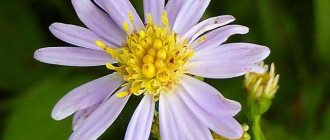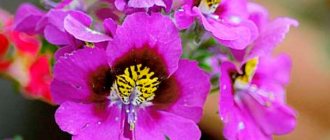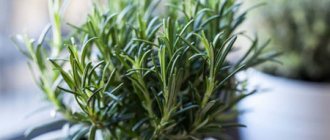Balsam belongs to the balsam family. Today this culture has fans almost all over the world. The variety of varieties allows you to choose herbaceous plants for open ground and for decorating house terraces or window sills in apartments. In an apartment, balsam can become perennial thanks to lovers of floriculture and home care.
In appearance, this herbaceous culture is similar to a shrub. The plant grows up to 70 cm high, and in diameter can reach 45 cm. Balsam has an even stem, densely covered with oblong and narrow fleshy leaves.
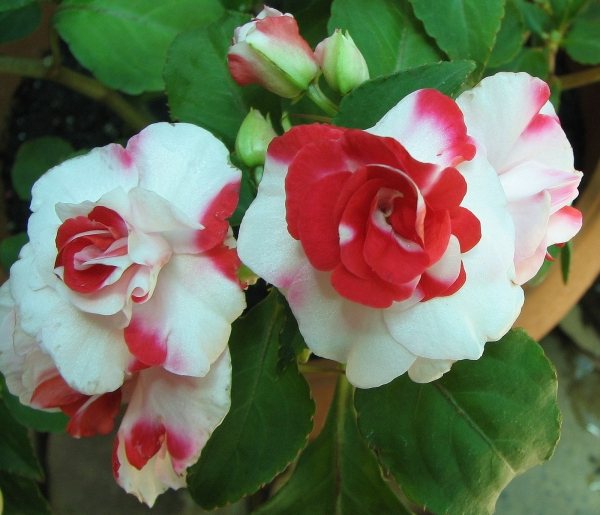
At the base of the leaves, in the axils, flowers grow. Their natural color palette is pink-purple. However, hybrids can have shades of flowers of various tones - red, burgundy, lilac-purple. Moreover, there are plants with both single flowers and those collected in inflorescences. In open garden plots, flowering begins in May and ends with the first fall frost.
The seeds ripen in a box with a light edging. The fragility of the capsule is an indicator of seed maturity. It cracks from a light touch, and the seeds "shoot out" at a distance of up to 2 m, hence the Russian name - touchy.
Droplets of liquid may appear on the edges of the balsam leaves. Because of this interesting feature, the plant was popularly nicknamed "Vanka wet".


Overview of species
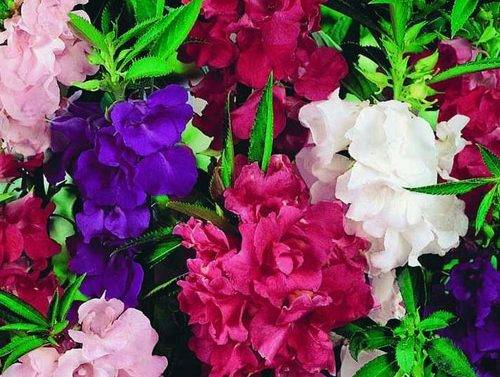

Annual, perennial herbaceous shrubs with lanceolate curly leaves, fibrous root have different configurations, growth. If dwarf varieties grow up to 25 cm, giant species sometimes reach 2 m. Among the numerous species (almost 500), medium-sized specimens (70 cm) are the most widespread. Cultural species are classified into 3 groups:
- New Guinea perennial hybrids with variegated foliage.
- Waller's balsam (erect perennial).
- Annual garden balsam.
Ground cover ampelous varieties with many shoots luxuriously cover the curbs. A common species is erect bushes. This group includes garden balsam. For the drops hanging from the leaves, the balsam is called "Vanka wet", for the variegation of colors - "Fire", long flowering - "Eternal Blossom". The touchy one was dubbed for the ability of the box to open from a light touch.
"Vanka wet" in the selection collection is represented by several varieties: tall "Camellia Flowered", low "Thoth Thumb". This group includes the exotic Balfour Balsam, which does not take root in our climate. Erect shrubs of the "Zheleznokosny" species grow up to 2 m, garden height reaches from 70 cm to 1 m. The bushes are decorated with pink, light, purple buds located on leafy branches with a reddish tint.
Classification
According to various sources, the genus Balzamin includes from 400 to 550 species. There are 3 main groups. Until recently, exclusively traditional species were cultivated. They were distinguished by juicy spreading stems and pink, red or white flowers. These species belong to the first group. The second includes F1 hybrids (first generation).These are compact, low plants, differing in the mass of flowers, in which leaves are practically not visible. Lilac and orange were added to the traditional colors. The third group includes New Guinea hybrids. They are distinguished by the variegated color of the leaves. Species also have their own classification. So, there are plants with double, variegated and monochromatic flowers. The former are subdivided, in turn, into carnation, rosaceous. Camellia varieties are also present in this category. Bouquet-bush and low-branching forms are also cultivated, having a height of up to 40 cm. In these varieties, flowers rise above the leaves. Thus, the effect of a bouquet is created. There is also a dwarf form with a stem up to 25 cm.


Conditions for propagation by seeds
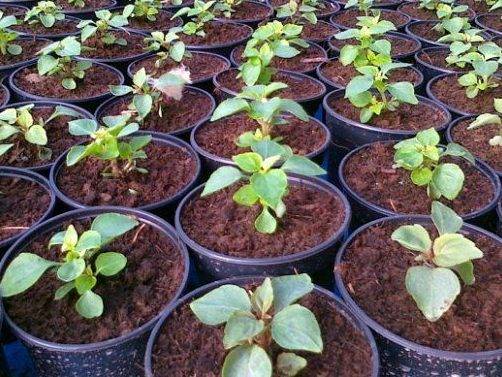

Annuals usually reproduce by seeds that ripen in hemispherical capsules. Small seeds of touch-me-not balsamic (in 1 gram up to 100 copies) from touching the walls "shoot" for several meters. The possibility of germination lasts up to 8 years, however, in an environment with aggressive temperatures, seedlings do not always germinate.
- When they get on the sand, they do not form inflorescences.
- In excessively moistened soil, the leg quickly turns black.
The best option is to grow seedlings, then plant the matured shoots in the ground. Sowing time in boxes is February-March. If the process is delayed, the flowering time will accordingly shift.
First, the container is carefully treated with a disinfectant. Any protective fungicite of organic, inorganic origin will do. For example: "Fitosporin-M", "Alto super", "Amistar extra", "Amistra trio", copper sulfate. Substances suppress the activity of pathogenic pathogens, quickly evaporate from the soil. Although the plant is unpretentious to the quality of the soil, the loose soil must correspond to the acid-base balance (pH 6.3). When filling the container, the following are added to the sheet earth in the same proportion:
- clean sand;
- vermiculite;
- peat.
The soil
As mentioned above, balsam is an unpretentious plant. It can grow well in almost any soil at a pH of about 6. A substrate is prepared for the plant. It includes sand, leafy, humus and turf soil. All components are taken in equal proportions. The pots fit any shape. However, too wide or flat (low) containers are not recommended. This is because a strong root system requires good drainage. We will tell you how to cultivate garden balsam from seeds below.
Sowing
If the package does not say about the stratification of seeds, it is better to hold them first in a weakly concentrated solution of potassium permanganate, then rinse in warm water. Then the seedlings spill out on the ground, sprinkle with sand (vermiculite). The top layer is sprayed from a spray bottle. For healthy sprouts to appear, you must:
- a lot of light;
- high humidity;
- temperature not less than + 21 ° C;
At a lower temperature, the container is covered with foil, glass, agril. Important conditions:
- daily condensate removal,
- inflow of fresh air,
- systematic moistening.
After the first shoots appear, the temperature drops by 1-2 degrees. If the container is on a windowsill under active rays, it is best to cover the glass with a curtain. When 3 leaves are formed, the seedlings dive into the pots.
To ensure an even flow of light for the seedlings, the pots are placed at a distance. Watered with periodic addition (1 time in 10 days) of universal fertilizer for seedlings.


Garden balsam is grown from seeds using different technologies. Sprouts quickly "hatch" on a damp cloth. After 3 days, a white dot appears on the swollen grain. Sprouted seedlings are planted in the substrate.
The ideal solution is peat tablets.First, the compressed "washers" are placed in water, where they instantly increase in volume by a factor of 4. Then, the grain is placed in a small depression. Moisture is retained in peat for a long time, pathogenic microorganisms do not develop, and a strong immunity is formed in seedlings.
Probable difficulties
With a lack of moisture and excessively high temperatures, the leaves may begin to droop. To prevent this phenomenon, it is necessary to water regularly. However, this does not mean that the sump must always be filled with water. With excessive moisture, the plant will die. In some cases, gray rot can be found on the inflorescences. It appears not only from excess moisture, but also when kept in the cold. When damaged by pests, yellowing of the leaves is noted. Decay of the roots and base of the stem can occur from lack of light, excess moisture and at low temperatures. When kept in cold, overfeeding or excessively hot and dry air, buds and flowers begin to fall off. Also, this phenomenon is noted when the soil dries out. In low light, variegated forms can lose color. In winter and autumn, plants may stop blooming and begin to lose their leaves. This is due to lack of light and when kept in the cold. In some cases, blanching of the leaves can be detected. Together with this, the stems are pulled out. The emerging leaves are smaller than they should be. This happens when there is a lack of lighting and nutritional deficiencies. At temperatures over 22 degrees, rapid growth is noted. The stems are elongated and bare at the base. As a result, balsam loses its attractiveness. To prevent overgrowth, renewal should be carried out in the spring. For this, several young shoots are cut and rooted in one pot. If the plant is cold or too damp, leaves begin to curl and fall off. In this case, rotting of the stems is noted. This happens if containers with flowers are exposed outside during rainy and cold nights. Sudden flying around the buds can be triggered by moving to too large a container or at the wrong time. In addition, the cause of this phenomenon may be overdrying of the soil or cold snap. A red spider mite can settle on the plant. This occurs in the winter when dry and high temperatures. In this case, the leaves begin to turn pink and become covered with spots.
Possible problems


With insufficient ventilation, excessive moisture, spider mites, aphids, and whiteflies appear.
- When mold appears in the pot, the top layer is replaced with clean sand.
- If green moss has grown, the container, half filled with new soil, is exposed to diffused solar streams.
- A plant with withered leaves is transplanted into a dry substrate. In this case, it is better to cut healthy shoots.
- To increase the immunity of the root system, to enhance the decorative effect, the seedlings are periodically sprayed with Kornevin, Zircon and other growth stimulants.
- A solution of laundry soap will help get rid of aphids. In case of severe damage, drugs with aggressive components are used - "Fitoferm", "Actellik". "Lightning", "Akarin" are effective remedies for combating spider mites.
- Blackleg is a sign of bacteriosis developing in acidic soil. The soil is watered with a solution with a diluted microbiological preparation to protect against fungi. ("Fitosporin"). In the absence of a remedy, you can use an antibiotic of the tetracillin group by dissolving 1 tablet in 200 ml of water. Untouched leaves are best torn off for vegetative propagation.
Watering
In summer and spring, the plant should receive a large amount of water. Watering is carried out immediately after the top layer of the substrate has dried. Less water is needed in autumn and winter. Watering is carried out 2-3 days after the top layer of the substrate dries up.The water must be separated and at room temperature. When watering, two conditions must be observed. First of all, do not overdry the substrate. Otherwise, all the buds may fall off. Also, you can not overmoisten the substrate. This leads to disease and decay. This is especially important in winter with insufficient lighting and low temperatures.
How to plant seedlings correctly
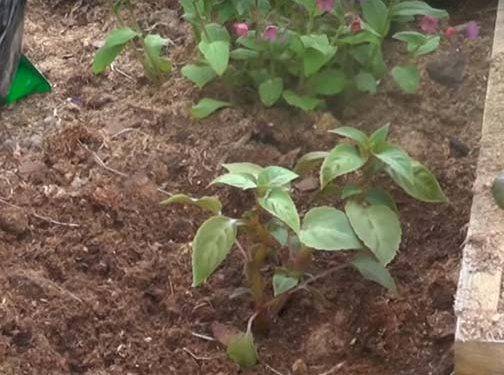

A comfortable microclimate, the brightness of the spring sun contribute to the rapid flowering. Fortified seedlings are planted in loamy soil, generously fertilized with organic fertilizer (manure). It is better to do this in mid-June, when there will be no night frosts. In order not to stress the plants, it is necessary to take them out together with a wet earthy clod. Single specimens are planted in pits corresponding to the height of the pot at a distance of 25 cm. Soil:
- rammed,
- mulched,
- watered
In order for the flower to quickly adapt to the new environment, the root shoots are immediately pinched.
If the summer promises to be warm, you can sow seeds directly into the ground in May. At the night of landing, you will have to cover it with a "blanket". With a stable temperature regime (from + 21 °), the first shoots appear after 18 days. The fragility of the stem, the tenderness of the petals determine the location of the flower bed. Balsam perishes on an area blown from all sides by the wind. Otherwise, a protective curtain is hung or a flower garden is surrounded by a decorative fence. A heat-loving plant is comfortable in partial shade. Withered leaves, pale color - signs of intolerance to hot rays. At noon, it is better to cover the flowers with an impromptu tent.
The vegetative period ends with yellow bolls. If you want to extract the contents for sowing next spring, it is better to remove them unripe, fold them on the windowsill, otherwise the seeds will scatter around the garden. Hull later, pour into a rag bag, leave until February in a dry place.
Impatiens walleriana
Balsam "Waller" ("Waller") is considered the original form of numerous hybrids. This is a very beautiful plant. Height reaches 60 cm. The plant is perennial, grown as an annual. It is distinguished by a bare, succulent stem with thin leaves and a large number of twigs. After germination, flowering is observed on the 90-100 day. The leaf has a long petiole. It is often longer than the plate itself. The leaves have a broad-oval or ovate-diamond-shaped pointed apex and a wide wedge-shaped base. The blade reaches a length of 4-6 cm. At the ends of the stems there are single and rather large flowers. They have the most varied colors. They can be plain or terry. This type is considered the most popular today. The seeds of the plant are small. A gram contains about 2 thousand pieces. Germination is maintained for 6 to 8 years. New hybrids and varieties of this species are often combined into groups either according to a certain color scheme, or stem height, or flower shape.
Watering and feeding
For vigorous growth, flowering adhere to the watering regime. Seedlings are moistened a couple of times a week, in the heat - as the earth dries up. Flowers react actively to root feeding. Nitrogen fertilizers are suitable in the period before bud set.
Mplexes with nitrogen inhibit the development of the ovary, but activate the growth of the green part. Potassium and phosphorus are added during flowering. Despite the proportions indicated by the manufacturer, 2 times more liquid is poured into the bucket. The recommended dose of complex feeding is divided by half. If the plants grow poorly, the leaves are small with a pale color, it is necessary to continue feeding with nitrogen, alternating complexes until the color is restored, growth is activated. However, excess salts also discolor paint and cause premature yellowing of foliage, so the dose should be observed. By the end of the season, feeding gradually stops.
Planting and leaving
When choosing the location of these plantings, it must be remembered that these heat-loving plants react negatively to low temperatures and drafts or strong winds.
In order for the bushes to fully develop, areas in the garden are selected that are sufficiently lit, but have some shadow on a bright afternoon.
Basic requirements for the soil: fertile, drained, neutral acidity. It is desirable to establish a regular but moderate watering regime. If you ensure periodic weeding and regular loosening, then the balsam flower will appreciate the attention. In gratitude, the plant will bloom more abundantly and brighter.
When fertilizing plantings, the following nuances are taken into account:
- an excess of mineral salts can cause yellowing and shedding of foliage, therefore it is better to apply half of the rate recommended by fertilizer manufacturers;
- balsams prefer foliar dressing, which can be done twice a month throughout the entire period of plant growth;
- increased application of nitrogen-containing additives will lead to increased foliage / stem growth and a decrease in flower set.
To breed and grow garden balsam, no special technologies and techniques are required. If the withered inflorescences are cut off immediately, the intensity and duration of flowering will increase. The plant is propagated by seeds or cuttings.
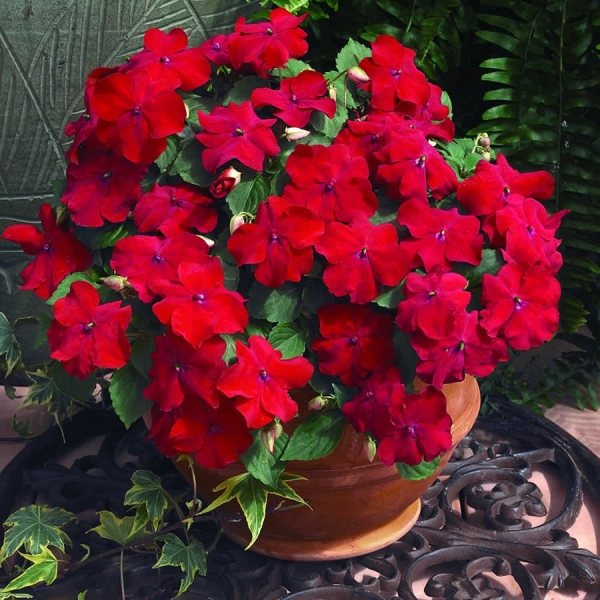

Balsam cuttings
If annuals are grown from seeds, vegetative propagation by leaves, a piece of stem is relevant for perennials. Hybrid New Guinea varieties, Waller's balsam, propagate only in this way. Cuttings completely retain varietal qualities. Cultivation of grains is likely if they are sold by seed farms. Seedlings from boxes grown in a personal plot rarely sprout.
The principle of grafting is as follows. Fragments of a plant - a piece of a stem, a leaf is placed in a bowl of water, left in a well-lit place. After a week, the roots break through, which take root well in the substrate. After a few months, the buds open. With this technology, reproduction is allowed during the growing season.
Advice! A few days before the process, the plant is fed, the pot is placed in a poorly lit room to form long shoots. The tops, leaves from the bottom are sheared, sent to containers with boiled water at room temperature. In response to the attention and care, the touch-me-not will thank it with lush flowering throughout the years.
Flowering and pruning
The formation of buds can occur all year round. This requires proper care. With insufficient lighting, frequent movement from one container to another, or at low temperatures, there may be few buds. During the winter, overgrown plants are cut in half in the spring. Better bud formation can be achieved. To do this, at the beginning of growth, when the shoot reaches the desired length, the top is pinched off from it. This stimulates the development of new processes. The more shoots there are, the better the flowering will be. Throughout the year, you can periodically prune, removing old or thickening branches.
Garden balsam: types, varieties and photos
In horticulture, approximately 400 varieties of both annual and perennial balsams are known. They are classified as cultivated and ornamental plants.
- Garden balsam - the most famous species. In fact, this is a perennial plant, but due to its lack of frost resistance, it is grown in the open field as an annual. It has sharp-nosed petals, the color of which includes almost the entire color palette. No wonder this plant is called "fire". In apartments and other closed spaces it can grow for more than 2 years. There are not very many varieties of balsam: "Camellia Flowered", "Baby Bush" and "That Thumb".
- Waller's balsam - a bright plant growing all year round. Has a memorable color of flowers that cover the entire surface of the balsam.Flowering occurs from June until frost appears. Before frost, it is advisable to transfer it to the house. The most common varieties are noted - "Stardust", "Frosty", "Symphony" and many others.
- New guinea - perennial, hybrid, obtained as a result of selection of Hawker's balsam with some species. It has a full stem, and its height reaches half a meter. Among the varieties of this type of balsam are "Harmony", "Divaro", "Mini Jini", "Java", "Jungle Rain", "Macarena" and "RainforestExotic".
Photo
Below you can see a photo of Waller's balsam flowers.
Planting balsam
Planting a plant can be done both in a pot and in open ground. It is carried out mainly by seeds. Although you can buy an already adult plant.
Advice. Balsams prefer slightly acidic soil, so add peat before planting in a pot.
The germination capacity of the plant is high quality. Planting is carried out one seed at a time in a separate pot.
- Within 3 weeks after planting, the plant must be kept at home.
- After the emergence of shoots, the balsam must be transferred to a cool place, for example, to a loggia.
- When the plant reaches 5 cm in height, it should be transplanted into a separate pot or open ground.
- The root should be pinched off a little. This is done to stimulate root development.
- Balsam is planted in shallow pits, slightly crushing the soil.
- Loosen the soil around the plant. In order for the plant to be lush and grow better, the crown should be cut off.
Growing from seeds
Positive qualities of seeds - long shelf life (about 8 years), fast germination (literally on the seventh day after sowing).
So that the seedlings for open ground are ready by the beginning of May, the seeds are sown at the end of February. The basic rules that must be followed when planting plants to get strong seedlings:
- the land is pre-treated with a fungicide;
- for friendly germination of seeds, constant humidity is maintained (therefore, the boxes are covered with a film) at a temperature of 23-25 ° C;
- after germination of seedlings, the temperature is reduced by about 6 ° C and artificial lighting is used;
- after the appearance of the first real leaves, you can dive the seedlings into separate pots and grow there until they are planted in the ground;
- the soil in containers is moistened before planting in the garden. In order for additional roots to appear, the main root is shortened by 1/3 of the total length.
With this breeding method, the bushes begin to bloom from the beginning of June. Seeds can be stocked at the end of summer. It is better to pick unripe boxes, as this will prevent the seeds from scattering.
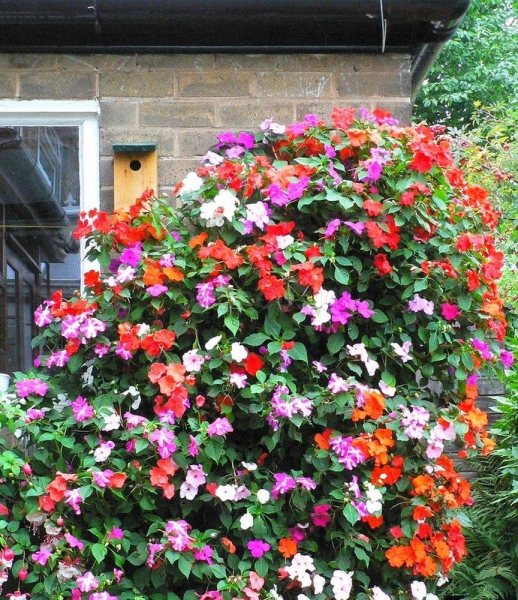

Caring for the "touchy"
All types of balsams are sun-loving plants. In the summer, they are planted in open ground. Planting is done not earlier than June, so that the plant can acclimatize.
In the winter season, a perennial needs additional lighting. With its lack or absence, balsams stop blooming.
The main problem in caring for a plant is the need to comply with the temperature regime. The optimum temperature for it in the summer is from 18 to 25 degrees Celsius, in the winter from 13 to 16. Frequent changes negatively affect the plant.
In the summer, watering balsam should be abundant, and infrequent in the autumn-winter. When watering, it is important to remember the balance: the plant should not be dry or very moist, as this leads to rotting of the roots.
Fertilizers are used exclusively in the summer, once every 14 days. In winter, the perennial is fertilized only when it blooms. In this case, mineral fertilizers are suitable.
Temperature
Garden balsam, cultivated and caring for which is carried out similarly to most common annual and perennial crops, in the presence of a moist substrate and fresh air, it can tolerate heat well.However, the optimal temperature is 20-25 degrees. In winter, it is better to create cool conditions for the culture. In this case, the temperature should not be lower than 12-15 degrees. In the absence of an opportunity to ensure the optimal mode, you should definitely create good lighting. Otherwise, shade along with low temperatures will lead to poor flowering and overgrowth.
Plant propagation
Reproduction of balsam can be done in two ways.
- Seeds. The plant has high germination characteristics. Sowing is best done in spring. In advance, balsam seeds are soaked in warm water for 10 minutes.
- By cuttings. Cut off the tops of the plant up to 5 cm long, immersed in water until the roots appear. They do this, like sowing with seeds, in the spring. The process is quick and easy. To improve the development of the bush, the cuttings should be pinched.
Moving
Transplantation of balsams is carried out in the spring. If necessary, it can be produced during the summer. It should be borne in mind that the best flowering will be achieved in the plant that is a little cramped in the pot. To stimulate the formation of new shoots, pruning is carried out. Young plants are transplanted annually. In this case, you can simply load them. For mature plants, either replanting or renewal is effective. The latter is carried out by rooting the apical cuttings.
Dangers: diseases and pests
Like many representatives of the flora, balsam is susceptible to disease and insect attack.
- Rot is a consequence of abundant watering during the cold season. To exclude the appearance of rot, water should not be allowed to stagnate in the soil or pot.
- The spider mite is a serious enemy for the touch-me-not. Modern chemicals will help to exterminate the pest.
- The whitefly is also a nasty pest. The falling leaves are the result of her work. The fight against this unpleasant insect is carried out with the help of some chemicals.
Landing features
Before planting balsam, it is worth feeding the soil, since this plant, especially during the growth period, needs nutrients and trace elements.
"The best planting option is a light-textured, slightly acidic soil."
If the seedlings were grown from seed in pots, they will need to be planted in the soil to the same depth as they were buried in the pot. It is best to plant balsam next to begonia, fuchsia or verbena.
Floral arrangements or combinations with plants
Gardeners prefer to plant balsam in group plantings. It goes well with begonias and bells. Some people like the composition of balsam with violets. Balsam looks interesting in a company with boxwood.
"Vanka wet" is widely used in landscape design. It is used to decorate alpine slides, flower beds. Garden balsam is also used to decorate borders and create mixboxers.
Garden balsam is an annual that, with careful care, can become a perennial plant. Growing it is possible both at home and in the open field. Planting, breeding and caring for a plant can seem quite daunting to some. But the beauty of the annual and its fabulous flower-lights make up for everything in full.
Features of the
The Latin name of the genus - impatiens (sensitive) - contains a distinctive feature that these garden flowers possess. Balsam is also called “touch-me-not”. This name is due to the fact that with a slight touch of the fetus, the capsule is suddenly opened. Five leaves instantly twist and shoot seeds with a force of two meters. For its long and abundant flowering, the plant has received another name - "light". In Germany he is called "the diligent Lisa", and in England - "the hustler Lizzie." Garden balsam in Austria is called "beautiful wreath". So the inhabitants of this country compare the plant with the girl.There is another name - "Vanka-wet".
Growing garden balsam: video
The balsamic family. Annual or perennial. Of the annual species, the most widespread in floriculture are garden balsam and glandular balsam.
Garden balsam originally from Vost. India, erect, 30-60 cm high, fleshy shoots, smooth; flowers are sessile, axillary, simple or double, of various colors (white, pink, red, purple). Depending on the structure of the flower, several groups of garden balsam are distinguished: carnation, camellia, 30-50 cm high, with large double flowers, rose-shaped up to 70 cm high.
Balsam zhelezkovy, or Royle, originally from the Himalayas, about 2 m high; leaves at the base with two glands. The flowers are large, simple, white, pink or red. It blooms, like garden balsam, from July to frost.
Annual balsams photophilous and thermophilic, do not tolerate even light frost. The soil is desirable loamy, well fertilized with organic matter, not wet.
Seeds are sown in April in a greenhouse, they also dive into a greenhouse. You can do without picking, then sow less densely and thin out the seedlings. They are planted in the ground at the end of the frost. Transplant balsams are easily tolerated; with a damp earthy clod, it can be transplanted even during flowering. Used in rabatkas, groups and as a summer pot culture. Zhelezkovy balsam decorates fences well, can be planted in groups on the lawn.
Perennial balsams grown in rooms, especially African species - indoor and Holstia.
Balsam room it is distinguished by abundant flowering. With good care, it can bloom continuously throughout the year. Bright pink flowers are freely located above the leaves, several pieces at the ends of the shoots.
Balsam Holst has large brick-red flowers. Very good shape with large pink flowers and a dark center. Propagated by seeds and cuttings. Cuttings root easily, plants grown from spring cuttings bloom in summer, and from summer ones throughout winter. It is advisable to renew the balsam annually with cuttings or seeds. A very nutritious land is needed. Watering is plentiful in summer and moderate in winter. The plant should be placed only on the southern windows.
Appearance
Balsam is distinguished by fleshy thick stems. Leaves can be solid or serrated at the edges, usually oval in shape. Their color comes in all shades of green and even purple-bronze. Depending on the type of flower, the leaves can be 9-12 cm long. Flower fruits represent the whole range of colors: from simple white to a wide variety of two-colored.
On a note. Indoor types of Balzamin are characterized by the attractiveness of their colors. This plant has a very long flowering period. Withered buds are replaced only by blossoming ones, and still closed ones on the way.
What is garden balsam
Experienced flower growers often plant balsam at home, but if there is a summer cottage or a flower bed under the windows, they willingly make room for this flower. A huge advantage of balsam is the long flowering period - all spring and summer plus September-October, if the autumn is warm. So that the buds do not disappear quickly and please the eye for a long time, the most elementary care should be carried out. More garden balsam is not required.
This plant is a representative of the wild balsam family, which was cultivated earlier than anyone else: around the 17th century. The homeland of the ancestor of the decorative species is the island of Zanzibar, located off the eastern shores of the African continent. In Europe, it was jokingly called "Zealous Lisa" for a long period of flowering, and in Russia, where the flower began to be bred in the 19th century, it was called a light (for its brightness growing), and also "Vanka wet" - because on some varieties on cloudy days, viscous "tears" are formed.
Garden types of balsam are more often annuals, and they can become perennials only in indoor conditions. In appearance, the plant is a bush with a single trunk and fleshy leaves that easily break off at the base (because of this, in Russia, it was called touchy).The height of the flower can reach 70 centimeters.
Garden varieties are taller and more sprawling than indoor varieties because they have more room to grow. Their flower buds are also usually larger. Inflorescences are formed at the base of the leaf petioles. But even street varieties of balsam do not tolerate cold weather, and therefore they are planted in already well-warmed soil.
Decorative features of the flower
Earlier than in Europe, balsam appeared in Asia, India and China. It was used to decorate the imperial gardens, it was planted in temple flower beds and was revered as a divine gift. Travelers from the Old World could not help but turn to this plant, but it was strictly forbidden to export its cultivated version, so they had to go around and select wild species themselves.
But the end result fully justified all the efforts. By the end of the 18th century, balsams bloomed in greenhouses throughout Europe; much later, scientists managed to obtain less thermophilic varieties suitable for growing in flower beds.
Today these flowers are widely used in landscaping. Due to the variety of colors and the long lifespan, these annuals are the best suited for creating amazing living compositions. And it is quite possible to do them in home flower beds, because the cultivation of balsam does not cause difficulties.
Important. Garden bush varieties are highly branching due to which they form a dense crown, strewn with bright buds. They can be planted next to begonias, fuchsias, vervains, ageratum.
What types of balsam can be grown in the garden?
The most common shades of garden balsam are pink, white, red and purple. It never forms blue or yellow buds. Flowers can be either simple or double petals.
In general, the varietal composition of just one type - garden balsam - is not so numerous, but other popular varieties of the hybrid type can be grown in the open field, which in the summertime feel quite comfortable in the beds. These include Waller's balsam, New Guinea, Camellium, Impreza, dwarf and terry varieties. To date, breeders have bred many interesting species that can be grown without problems in open ground and street pots.
You can read about growing balsam at home in our article.
Table # 1. Common varieties of balsam for the garden
| View, illustration | Comment |
| "Tom Trumb" | A dwarf species reaching a height of 25 centimeters. Differs in bright color and long flowering period. On the same bush, the buds can open one after another during the period from June to September. Flowering stops with the first frost. |
| "Symphony" | A low-growing variety, ideal for border decoration. It reaches a height of no more than 20 centimeters, but has bright and large flowers. It goes well with other flowering crops. Lives until late autumn, then you can transplant the balsam into a large pot and bring it into a room where it will delight the eye all winter. |
| Waller variety | Named after the scientist who discovered it. One of the most popular versatile varieties. It can be grown both in a flower bed and in a room. It can be used to form single-variety flower beds, mixborders and even vertical landscaping. The buds appear before the first frost - usually before the beginning of September, if we are talking about central Russia. It is recommended to plant this balsam in places well protected from wind and heavy rain, as it has fragile leaves and stems. |
| Scarlett | A very bright decorative variety with fiery or coral flowers. It is better to plant it in the middle of the flower bed - as an accent element. |
| Camellium | It belongs to tall varieties, it is suitable not only for decorating flower beds, but also for forming decorative circles around groups of shrubs and trees.This plant protects tree trunks well from pests. The buds resemble camellias, for which this variety got its name. |
| Sultanoid | It is included in the group of versatile varieties for home and garden. It grows in the ground like an annual, which dies off with the first frost. It has a bright distinctive feature - an unusual color of the leaves: they are dark green at the edges, light yellow in the middle, with reddish veins. It blooms with large juicy pink and red buds. |
| Baby Bush | A dwarf species with medium-sized buds that can be of various shades. Best suited for border arrangements and mixed flower beds. |
| "New Guinea" | Despite the name, reminiscent of the African continent, the variety was brought to Russia from France. It is incredibly popular in the gardens of Provence, where it rivals even the famous lavender. Perfect for decorating chamber club compositions due to its compactness. It usually blooms with buds of a pale pink or salmon shade. |
Description
Garden balsam flower is a long-flowering plant. It is distinguished by an erect stem. It reaches a height of 0.5 m. The stems of the flower are branched, smooth and succulent. The leaves of the plant reach 8-12 cm in length. Their shape is oval or lanceolate. The leaves are purple-bronze or green, fleshy, serrated along the edges. The flowers are usually red and pink. They are located in the axils of the leaves. Terry garden balsam - hybrid form. The leaves of the plant are multicolored. Terry flowers, also have a different color, except for yellow and blue. The plant produces fruits. After flowering, a multi-seeded oblong box is formed. The fruit opens with 5 curling leaves. 1 g contains up to one hundred seeds.
Planting balsam in the garden
It is possible to plant a delicate flower directly into the ground only when the air temperature reaches the summer norm. Later, it is planted in the northern regions, earlier - in the southern ones. If the threat of frost persists, then the plant must be covered, because with the slightest hypothermia, the balsam will die.
There are three ways to grow new specimens:
- Seeds.
- Seedlings.
- Cuttings.
The first method is preferable for the southern regions, where spring and summer start early and autumn is warm. In the middle lane, with a favorable weather forecast, you can also sow seeds on the flowerbed at once, but the weather in this region is often changeable, so it is better to play it safe and use the seedling method - to place already semi-mature, strong plants in the ground. For the northern regions, only a greenhouse method is possible - when the seedlings are kept in a greenhouse for some time before being moved to the open air.
Seed use
It is advisable to breed balsam using the original seed only if the soil in the garden has had time to warm up well, and the air temperature has risen to at least +20 degrees. Such weather in the middle lane usually occurs in late May or early June, but this is not scary - garden varieties grow quickly, and then they will bloom until late autumn. But still, this method works better in southern regions, where there is no threat of a sudden drop in temperature to frost.
You can buy seeds at the store. Balsam has excellent germination rates, so that the seed has a shelf life of 6-7 years. But in order for the seeds to germinate, they need to be properly processed:
- We disinfect the seed in a weak solution of potassium permanganate for about a quarter of an hour).
- We spread the wet mass on a wet napkin laid out on a shallow plate.
- We put in a warm place, wait for swelling (about 6-12 hours).
- On beds with pre-prepared soil, we make holes 1-2 centimeters deep.
- We put the seeds in moistened soil, cover the top with dry soil, spray it and add mulch.
- Cover the bed with foil.
- We are waiting for the appearance of the entrances for about 10 days, after which we remove the cover.
- If the crops are too thick, thin them out so that about 30 centimeters remain between the plants.
In a similar way, you can plant balsam at an earlier date - in April, using a greenhouse or greenhouse for this.
Getting seedlings
A less risky breeding method is to obtain seedlings from seeds and place them in the beds. To be in time before the warm season, you need to start at the end of February or at the beginning of March. Individual pots with substrate or peat tablets should be selected for new seedlings.
The swollen seeds prepared in the manner described above are transferred to the moistened soil, the containers are wrapped in a film. From time to time, its edges are raised and a little water is added so that the soil does not dry out.
After the sprouts appear, the cover is removed, and the pots are placed in the sun, for example, on the southern windowsill. Additionally, you can highlight phyto balsam or a regular lamp. During this period, the plant requires an air temperature of 23-25 degrees.
Important. As the seedlings grow, the roots of the seedlings become bare, so you need to periodically pour more soil on top of them. The hardened flowers are watered in a pallet, otherwise the formation of gray rot or fungus on the stems is possible.
When the plants have 3-4 large enough leaves, pinch the crown so that the branching of the crown begins. This will make the bush more lush. In the ground, you can plant specimens with a formed and strengthened stem, but you need to wait for the onset of warm weather. If you plant at the end of May, flowering will begin in June.
How to use cuttings for propagation
If you want to grow balsam in your garden as quickly as possible, then in this case, the cuttings method is best suited. Shoots can be obtained from adult plants that are already on the site, from universal varieties from the windowsill, from friends and neighbors. Thanks to this method, the flower takes root well and reaches the flowering stage very quickly.
Step-by-step instructions for grafting balsam
Step one: carefully cut the stem with internodes from an adult bush (It should be at least 7-8 centimeters long).
Step two: place the scion in a jar with previously settled clean water and wait until the roots appear.
Step three: transplant the cutting into a pot with a loose and moist substrate.
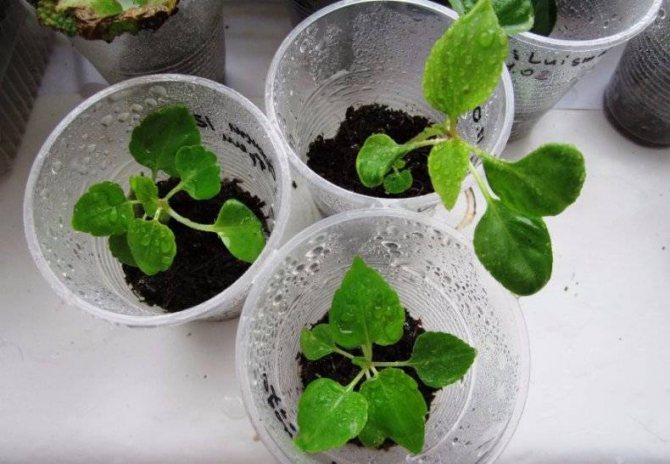

Step four: move the container to a well-lit windowsill.
Step five: cover the shoot with a film or bag, and periodically water it a little so that the soil does not dry out.
Step six: after 7-10 days, when the plant is well rooted, you can plant it in a flower bed.
Video - How to multiply balsam
Care rules in indoor and outdoor conditions
An attractive but capricious plant requires special attention:
- Remember that balsam does not tolerate direct sunlight, but it requires at least 3-5 hours a day of good lighting.
- If in the warm season you decide to take the flower out into the open air, make sure that no precipitation falls on it.
- Avoid hypothermia.
- In spring and early autumn, watering should be abundant and regular, in summer it can even become daily. In winter, the frequency of watering must be regulated by ourselves: so that the soil is not dry, but so that the water does not stagnate in the pan.
- The leaves of this plant will be grateful to you for spraying (but this can be done only at temperatures above 20 degrees), otherwise they can repay you with a banal fall.
- From May to September, balsam requires fertilization every two weeks.
- If you bought a flower from a store, immediately transplant it into a less spacious pot. This will give an impetus to flowering.
- Do not forget to also get rid of faded buds - they interfere with the growth of new ones.
- Before freezing, cover the balsam bushes, and open again with new warming.
- If your flowers are planted in pots, just bring them into the hallway or veranda.
- The best propagation method is cuttings.
- Collect the seeds of the "impatient" plant should be after the yellowing of the box itself. This procedure must be carried out very carefully, because at this time the seeds become very "vulnerable".
Where to plant balsam in the garden?
This flower loves warmth, does not tolerate frost, wind and excessive dryness of the soil. Therefore, you should choose a place in the garden for him very carefully. Dwarf species in curb-planting format can be placed under building walls, by a fence, or protected by shrubs.
The balsam bed should be placed in a well-lit area, but not where all winds are accessible. You also need to take into account that with prolonged exposure to the sun, the flower quickly withers and dries, an openwork partial shade is preferable to it for at least half a day.
A bed for planting seeds, seedlings or cuttings must first be prepared. For this, drainage is introduced into the soil - small fragments of brick or expanded clay. Above - a layer of well-loosened substrate mixed with humus, sand and ash.
Balsam does not like acidic soils, limestone will help to get rid of the increased acidity level - it is introduced into the soil in the fall. There is no need to fertilize the beds in advance - the balsam does not need feeding for the time being, and with an excess of nutrition, it can begin to shed its leaves.
Great for flower beds
Ampel balsam is distinguished by large flowers of various colors. An excellent version of a ground cover plant for curbs, growing in partial shade under trees.
Waller's balsam has a lush spherical crown, highly branching stems, large flowers of various shapes and colors. Shade tolerates well. The height of the bush is about 30 centimeters.
New Guinea Garden Balsam includes species with simple and semi-double flowers in red, purple or white. The bush is compact, the leaves are variegated, bright green, or bronze. Drought-resistant.
How to care for a flower planted in open ground
When planting in a garden bed or flower bed, holes are formed at a distance of 20-30 centimeters from each other. They must be large enough to accommodate the root system of a young plant. The seeds are buried quite shallowly - by 5-6 centimeters. Preparations for the prevention of fungal diseases are preliminarily poured into the pits. It can be Fitosporin-M or Planriz. They are bred in water in accordance with the instructions.
Important. It is also useful to add Kornevin to the substrate, which helps the seedlings to take root better. The roots and crown of the seedlings are pinched to provoke branching. After planting, lay mulch or sprinkle sand around the stem.
Watering garden balsam species is best done by small-drop irrigation. In extreme heat or dry periods, it is useful to spray the leaves and tops. Under normal conditions, the flower needs moderate watering twice a week. It is no longer needed, because this plant does not tolerate waterlogging well and immediately begins to rot. The main thing is that the soil is slightly moist - this is just enough for balsam.
You need to feed the flower very moderately - the standard doses of fertilizers for it are halved. You can use store complexes for geraniums, before flowering, it is permissible to add a little nitrogen fertilizers to the soil, and during the budding period - phosphorus-potassium fertilizers. From the end of summer, feeding is completely stopped.
Video - How to grow balsam in the garden
Botanical description
The houseplant Waller's balsam (or, as it is sometimes called, Waller) belongs to herbaceous perennials, and in the garden it is grown as an annual. The leaves are simple, glands are located at the base. The flowers are actinomorphic, they can grow singly or in inflorescences. There are five stalks, often of some color. One of the receptacles is extended into a corolla.The petals grow freely from each other or grow together in pairs. One unpaired petal is located opposite the spur. The filaments combine to form a cap, which falls off during maturation. This ensures cross-spray.
Gynoecium is formed by 5 carpels with a short column with stigmas in an amount from one to five. The fruit is a rather juicy box, which tends to suddenly open with the help of five curling leaves.
Summing up
Lush bushes of blooming balsam in the garden delight the eye until late autumn. To preserve the buds for a long period, the plant does not need extraordinary care, just such a feature is inherent in its nature. A guest from distant tropical islands can bloom even all year round, but in the changing seasons typical for Russia, this will not happen.
With the first frosts, the annual plant dies off, and next year it will have to be planted again. This can be done in a number of ways. After planting in open ground, balsam requires elementary care. The main thing is to choose the right place for him in the garden. And you can use a bright flower in different ways - you can use it to decorate flower beds, mixborders, border plantings.
Preparing for winter
In order for the balsam to please the eye with its flowering next year, it is necessary to have time to collect the seeds by mid-October. With the arrival of the cold at night, the leaves and stems quickly begin to die off.
"If the variety is hybrid, it is useless to collect the seeds, since they will not inherit the properties of the mother plant."
You can transplant your favorite plant into a voluminous pot and take it to the house for the winter. The wintering flower is kept at a temperature of no more than +15 degrees. It needs to be watered infrequently and only with warm water. Spraying can be done occasionally. With the arrival of spring, a plant that has survived the winter can be propagated by cuttings.
Descriptions of different varieties
Of the nearly half a thousand species of balsam in our climatic zone, only eight species of balsam grow in the wild and about a dozen domesticated forms.
The diversity of the existing number of these plants is carried out due to the numerous hybrids obtained as a result of breeding activities.


Flowerbed with different types of balsam
Among botanists, balsams are separated along the path of their origin. In total, there are three groups of these plants:
- First group
Includes traditional wild and natural plant species. They are often used by gardeners for growing in their plots, flower beds and greenhouses.
Despite the fact that they are quite mediocre in terms of attractiveness, their popularity is great. The reason for this is as follows: they are easy to care for and the least susceptible to disease or pest infestation.


A typical representative of the first group. Waller's pink balsam
- Second group
Consists of modern varieties and hybrids of the first generation of plants of the first group. Usually, they are obtained by seed cultivation and artificial pollination of representatives of various subspecies of wild-growing balsams.
Within this group, plants were obtained with the following properties:
- they have a long flowering time
- they have different shapes of flowering parts
- different color and texture of petals
Of particular interest from the second group are plants with extraordinary flower forms.a, which we managed to consolidate in inheritance. This, for example, is such an elegant solution as a double flower.
Variety of the second group "Pink Fiesta", most of the flowers are double
- Third group
It appeared relatively recently, no more than half a century ago. It consists of the descendants of the "New Guinea" generation hybrids, which is a series of plants obtained as a result of crosses of the first and second groups.
The allocation of these subspecies into a separate group is due to the fact that all of its representatives carry the genes of Hawker and Schleiger balsamines, discovered in nature in 1970. The name of the group is taken from the place where the plants were found - it was the jungle of New Guinea, as well as the island of Java.
Typical plant of the third group - cultivar "Paradise Timor"
Consider the most popular plant varieties currently grown:
back to menu ↑
See also: Aquilegia: the 25 most common species, planting, care and reproduction rules (70+ Photos & Videos) + Reviews
Waller's balsam


Natural coloration of all varieties of Waller's original balsam
- Actually, it all started with this view.... It was the first touch-sensitive plant domesticated in the 16th century. Most of the "old" varieties originate precisely from Waller's Impatiens.
- The plant has tall herbaceous stems up to 50 cm in length... The stems grow quite densely; they are thick and juicy. The leaves of the touch-me-not Waller are ovoid or slightly elongated. They usually have a smooth edge. The color of the leaves is usually dark green, but sometimes motley, reddish-brown color is also found.
- Waller's classic touch-ups have 4 primary colors: white, purple, red, pink. But that's not all. "Officially" registered as many as 17 shades of Waller's balsam. Sometimes the flowers are two-colored, mainly the petals around the perimeter are painted in a different color. There are both smooth and terry varieties of this plant.
- The plant has fantastic reproductive performance. Its small seeds (1 g contains about 2000 seeds) are capable of maintaining germination for up to 8 years, they can withstand negative temperatures down to -40 ° C. Seeds germinate as early as the second week after planting. Flowering occurs in 3 months. A feature of the seeds is that light is needed for their germination, so they are almost never added dropwise.
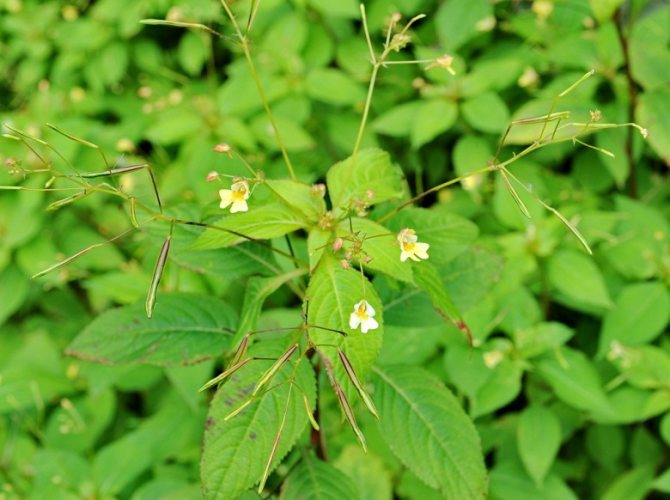

Small-flowered balsam
- According to the classification described above, Waller's touch-me-not and all her descendants belong to the first group. It also includes about a dozen wild varieties of balsam, such as, for example, small-flowered balsam. This species is the only plant of the Balsamin family that grows in the post-Soviet space in its natural form.
back to menu ↑
Read also: Begonia - care and reproduction at home (120 Photos & Videos) + Reviews
Garden balsam
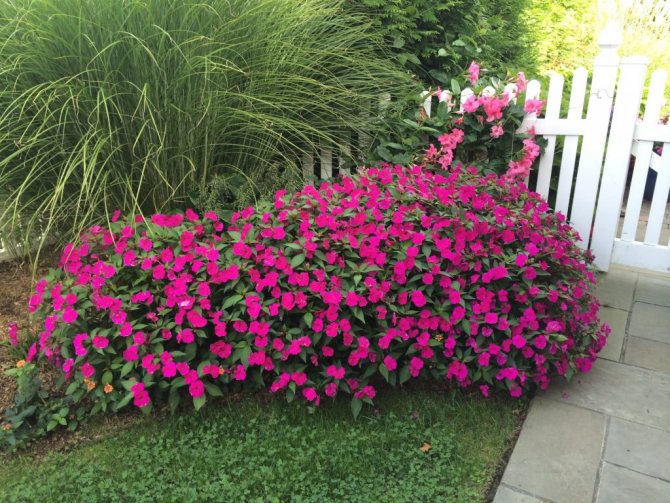

Garden balsam
- Also a plant of the first group, the ancestor of a large number of modern varieties. Leaves are elongated, with a pointed end. The height of the plant reaches 70 cm.The flowers are evenly distributed over the entire height of the stem, their sizes are from 3 to 5 cm.
- The plant is planted by seedling in early April... In May, it is planted in open ground. Flowering begins at the end of June and lasts until the end of September. The first fruits appear in August, but the plant does not lose its decorative effect. On the stems, flowers, berries, and ripe capsules, ready for seed release, can be located at the same time.
- The seeds are much larger than those of Waller's balsam, and their number in the fruits is less. Self-seeding can grow in one place for several years. If not controlled, it can occupy large areas, since the seeds have a high survival rate and germination capacity. In abandoned gardens, under favorable conditions, it can become a monoculture, since it covers large areas, completely surviving competitors.
back to menu ↑
See also: TOP-20 Primroses: flowers blooming in spring (March, April, May). Description and characteristics, recommendations for care (120 Photos & Videos)
Balsam Camellia
Camellia, a hybrid of garden balsam
- It is a typical plant of the second group, derived relatively recently. It has many jagged leaves and paired flowers, 4-5 cm in diameter, resembling a rose in shape.Camellia can be white to purple in color.
- The plant is very thermophilic, and does not tolerate low temperatures at all, therefore, when growing it, the seedling method is used. Seedlings grow poorly without light and shoot. To prevent this from happening, the cultivation of seedlings is recommended to be kept on sunny windowsills all the time and additionally illuminated with artificial lighting to ensure daylight hours for at least 12 hours.
- Camellias are sown in seedling pots or trays in early April, and already in early June it can be planted in open ground. Flowering occurs in the third decade of June. It should be remembered that the stems of the camellia are quite fragile, so the site for it must be protected from the winds.
back to menu ↑
See also: How to make garden paths in the country with your own hands? (80+ Photo options for great ideas) + Reviews
Balsam New Guinea
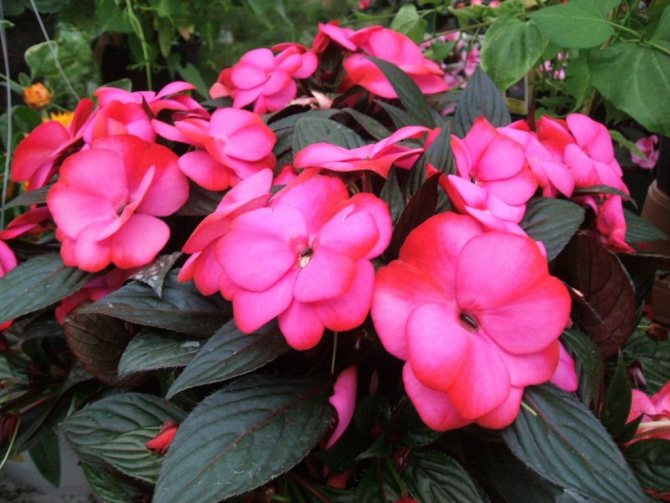

Balsam New Guinea
- Mainly grown at home as a perennial. It has relatively low stems (30-40 cm) and large, beautiful flowers, 7-8 cm in diameter. The number of petals in flowers can reach two dozen, some subspecies are very similar to small roses. The colors are predominantly shades of red, less often purple.
- The plant requires at least 14 hours of daylight hours. for normal flowering, which is difficult to obtain outside the apartment.
- In addition, the plant requires a relatively high temperature (from + 20 ° C to + 24 ° C)... At temperatures below + 18 ° C, the plant may stop growing, and you can no longer think about flowering. It is also important not to allow daily temperature fluctuations of more than 5 ° C. The plant is also critical to drafts, especially in winter; the pot with the substrate must have an ambient temperature, therefore it is not recommended to put it on cold windowsills in winter.
These varieties of hard-to-reach are quite capricious, so they are not recommended to be grown outdoors in our conditions.
back to menu ↑
See also: Spruce on the site: description, types and varieties, planting and caring for a trunk in the open field (70+ Photo Video) + Reviews
Niamean balsam
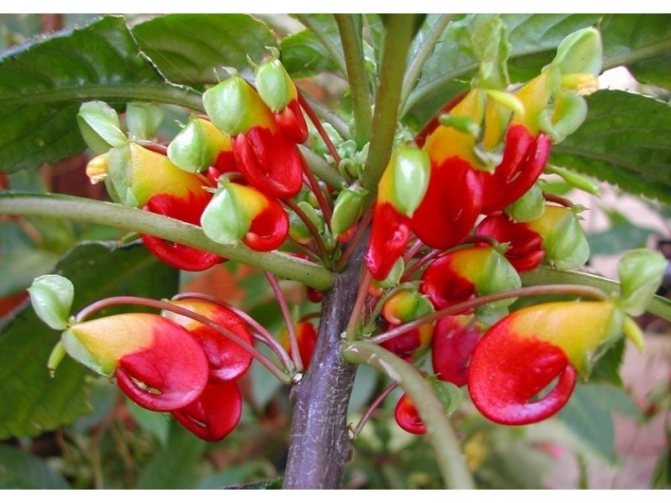

Niamey Balsam Flowers
- Also known as Congolese cockatoo or parrot balsam... It got its name for the similarity of flowers with cockatoo beaks. An extremely elegant and beautiful plant with many medium-sized flowers.
- The colors are almost always the same.... The flower is green outside, yellow in the middle, red end. Due to this, it has another, unofficial name - "traffic light".
- In our climate, it is considered exclusively as a houseplant.... Only in the southern regions can it be grown outdoors as an annual flower. There are several varieties with stem lengths ranging from 50 cm to 1 m.
- Under indoor conditions it takes root quite well... The temperature in summer is about + 20 ° С, in winter, during rest - from + 10 ° С to + 15 ° С. The main requirement is the absence of drafts and sudden temperature changes. When the air temperature changes more than 5 ° C per hour, it is able to shed leaves.
- This plant loves sunlight, but does not tolerate direct sunlight... Therefore, in areas where the flower is located, it is necessary to use diffusers in the form of nets, curtains or other artificial obstacles.
back to menu ↑
Read also: Geranium: description, types, home care, growing, reproduction, pruning and other useful information (50+ Photos & Videos) + Reviews
Sultanovid balsam


Sultanovid balsam
- This plant was widespread in Europe in the 19th century. Together with ficuses, it formed the basis of any indoor flower garden. At present, it is practically supplanted by more decorative varieties, although, in terms of its endurance and resistance, it is one of the most successful varieties of balsam.
- The height of this species reaches 30-60 cm... It has green foliage with pointed edges.Its flowers are located one by one on the stem, they are large enough (up to 8-10 cm); the flowers have spurs.
- The color of such a plant can be red, pink or white.... Indoors, it can bloom almost continuously throughout the year. The flowering time of one flower is about 2 weeks, the flowers appear constantly with interruptions of 5-6 days.
- This balsam has several subspecies, differing in the shape and color of the leaves. For example, variegated balsam has a white edging along the edges of the leaves.
The richness of the choice of balsams will allow you to implement any idea for decorating the lower tier of all green spaces: flower beds, lawns, borders. Despite the fact that the plant is annual, it is easy to grow and has a high density of flower cover. On the other hand, the use of the plant is not limited only to the lower planting level.
It can be used in vertical flower beds, ampels, flowerpots. The main advantage of balsam, one might say, its "trump card" - in a huge number of colors and forms of hybrids... It allows this plant to be used almost as a universal annual crop in any summer garden.
general information
In the overwhelming majority, the use of balsam is the covering of large areas of lawns and flower beds with a continuous flower cover. The plant is ideal for these tasks.
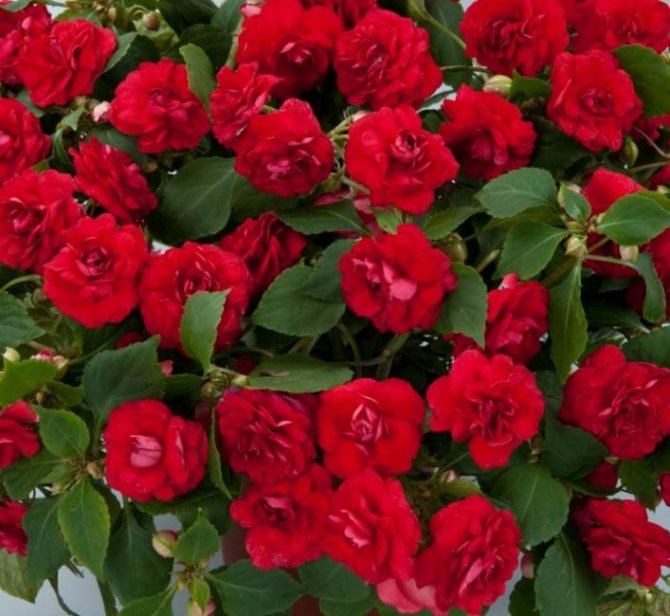

Ampel grade of balsam "Red double"
The volume of flower mass in balsam is almost the same as in deciduous, however, the flowers are raised slightly higher. Therefore, it often seems that it is the flowers, and not the leaves, that completely cover the lawn.


Balsam carpet on a flower bed
Due to its density and bright colors, balsam can be used in any landscape elements: from curbs to rock gardens. In addition, he will always find a place in ampel pots and various flowerpots. And the fact that in our latitudes it is an annual is even a plus.
Because every year you can plan more and more options for decorating flower beds in the garden.
Balsam or touch-me-not is a plant of the Balsam family, which got its name from a very sensitive fruit capsule that opens at the slightest touch.
In total, there are about 500 species in the family that have similar characteristics and almost the same appearance.
At present, it is distributed almost throughout the globe, except, perhaps, Antarctica.
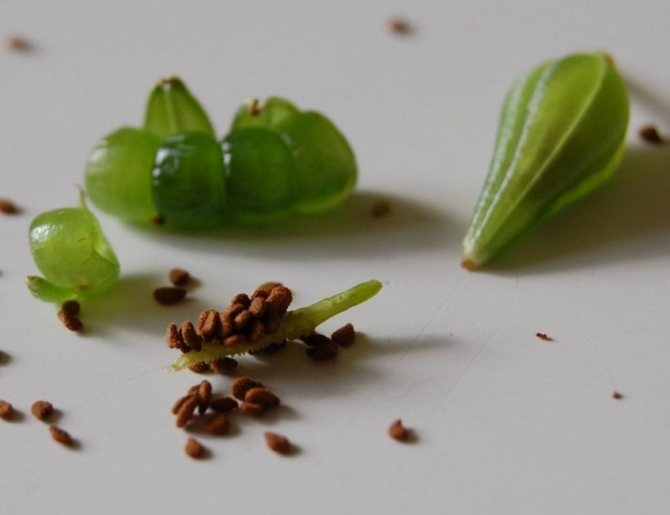

Fruits and seeds are touchy
- Touch-me-not is a herbaceous plant with a height of 20 to 60 cm with brittle and almost transparent stems.
- The leaves on the stems are arranged alternately.
- Their size ranges from 4 to 5 cm.
- The shape of the leaves is heart-shaped.
- The edges of the leaves are smooth, but can also be serrated.
The plant in its homeland (countries of Asia and Africa) is a perennial. In a temperate continental climate, it can be cultivated year-round only at home or in greenhouses and botanical gardens. The flowering period of the plant is almost the entire warm season.
Flowering under year-round conditions can last from 6 to 11 months. Until year-round flowering, as, for example, in marigold touch-me-nots, however, 11 months is a kind of record among plants.
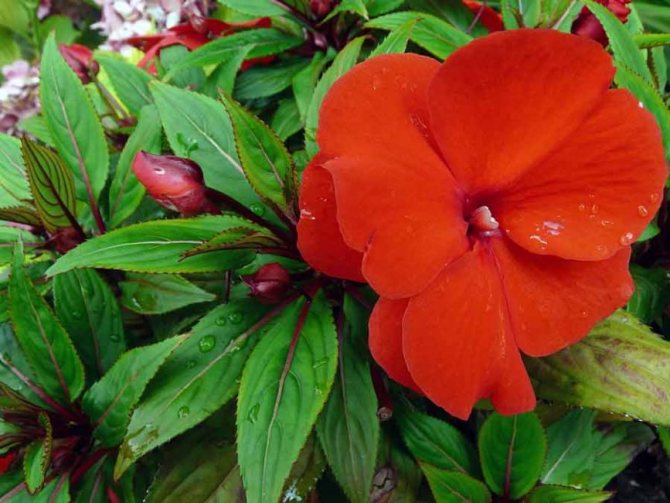

Flower variety "Stardust" close-up
The main advantage of balsam is its flowers. On one "bush" there can be more than 50 of them. Their color has all the possible shades that exist in modern gardens.
We can say that there is no such color that would not be reflected in some sort of balsam. About a month after pollination, a fruit similar to a berry forms in place of the flowers. Over time, it dries up and turns into a box that shoots with seeds at the slightest touch.
There are bushy, standing and ampelous plant stems. According to the doubleness of the flowers, they are divided into carnation, pink and camellia.There are also shrub forms of balsam, on which flowers are collected in inflorescences like bouquets.
The flowering time of the plant falls in late spring - early summer. It depends on the climatic conditions of the area where the balsam is grown.
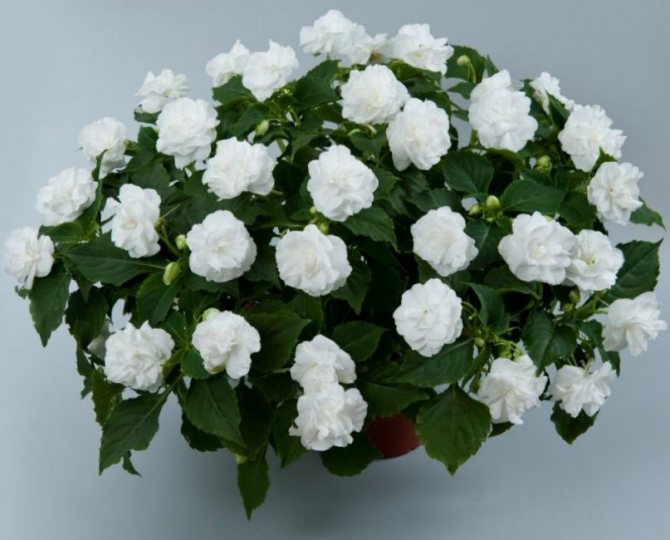

Ampel white touch-me-not
In the conditions of home or indoor cultivation, decorative types of touchy ones have become very popular:
- balsam Khosta
- impatience room
- balsam sultanovidny
They are all varieties of Waller's balsam, one of the most common forms of domesticated touch-me-not.
TOP 15 varieties of balsam for your beautiful garden


An amazing, pleasantly smelling, beautiful and spectacular balsam plant can be found on every personal plot. This perennial, like an annual flower, is very popular with gardeners. To date, in the world selection, more than five hundred types of balsams have been bred. These plants differ from each other in appearance, the volume of the bush, the shape and size of leaves and flowers, and various colors. Along the fences of summer cottages, you can find large and not very, bushes, from bright green to dark green, covered with scarlet, pink, yellow, orange, lilac and multi-colored, small and large flowers. These plants have an incomparable and heady aroma.
How, from the huge list of bred species and varieties, choose exactly the variety and type of flower that will fully satisfy your needs for beauty and aroma. We offer a detailed description of the most popular types and varieties of balsam, recommended for growing in personal plots.
Gallery: varieties of balsam (51 photos)
Disease prevention
The touchy balsam is resistant to many diseases, but it also has a weak point. A fleshy, moisture-filled plant is prone to rot. To avoid this, it is necessary to monitor the moisture content of the soil and not get too carried away with watering, especially for plants wintering indoors.
Photo: <>
Another common disease is the insect-borne viral mosaic. It spoils the leaves of the touch-sensitive flower and can lead to its death. The infected plant is treated with fungicides and the affected leaves are removed. Dangerous for balsam and bronze leaves. This disease deforms the leaves of touch-me-not and slows down their growth. The diseased plant is removed completely.
Balsams - photo
A beautiful decorative balsam is good everywhere and in any conditions: in flowerpots on the windowsill, in a green home corner, in garden seedlings or in a greenhouse. Just take a look at these pictures!
Description of culture
The plant is one-, two-year-old flowers and shrubs, reaching 20 to 50 cm in height. Shiny, fleshy leaves with sharp toothed edges, shaped like an oval. There are about 500 species in nature, and breeders have developed the most resistant varieties to our climatic conditions, resistant to pests and diseases. The hybrids have both simple and velvety flowers in a violet-pink color scheme. In the opened inflorescences, spurs are formed, touching which, after ripening, gives a sharp rash of seeds.
Reproduction of balsam
Balsam can be propagated vegetatively. In the fall, healthy shoots of the plant should be cut off and placed in water. After the roots appear, transplant into a small container with soil.
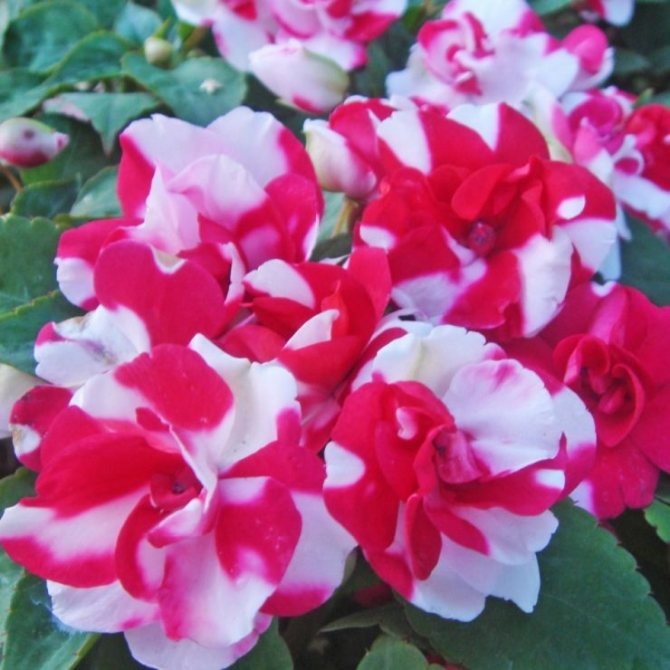

With the onset of spring, you can transplant the young plant into a main pot or open soil.
Perennials
Perennial balsam varieties are mainly used for growing in an apartment. They have room sizes, and also, unlike annuals, have enlarged leaves. Top dressing of such varieties can be done both at the same frequency as in annuals, and once every two months.Like them, they do not like to get into direct sunlight, but for them sunlight is more destructive.
IMPORTANT: It is worth putting such a balsam only at the northern and western windows.
Most perennial balsam varieties are hybrid offshoots from Waller's balsam, and the following types can be attributed to them:
- Waller's balsam;
- creeping;
- niamean or parrot;
- New Guinean.
In fact, there are many other types, but most of them are extremely rare, for example, Niamey balsam. However, some species thrive both when grown as perennials and as annuals. For example, creeping balsam does not have a pronounced stem, therefore it is often grown as an ampere plant, which is why it can be grown both in the garden for decoration and at home on the windowsill.
How to take care of it properly?
Caring for these wonderful flowers comes down to the following rules:
- Garden balsams love water. Watering should be frequent but moderate. Young plants need to be watered more often, as they are actively growing. It is also important to increase the amount of water on hot days. Make sure that the topsoil does not dry out.
- Watering should be done in the evening, after the sun has gone.
- The water must not stagnate. The soil should be moist but not overflowed.
- It is important that the top layer of the earth is loose. Loosening the soil will allow oxygen to flow better to the flower's root system.
- Top dressing plays an important role. Balsam spends a lot of energy on flowering, so fertilizers are vital for it. You need to feed it every 2 weeks with fertilizers rich in potassium and nitrogen.
- On hot days, the bushes need to be sprayed to restore water balance.
Reproduction methods
There are two main ways to plant balsam.
Seeds
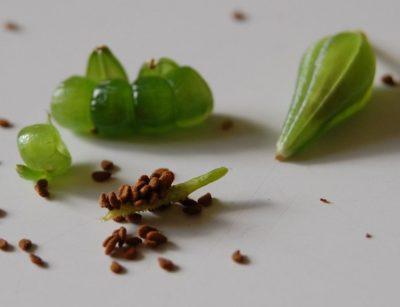

The seeds must be harvested when the fruits are ripe.- Plant seeds in shallow containers or boxes.
- Sprinkle a thin layer of earth on top and sprinkle with water.
- The container can be covered with a film, such a greenhouse will enable the seedlings to germinate faster.
- Greenhouses are best placed in a dark and warm place.
- When the first shoots appear, you need to rearrange the flower on a light windowsill.
- Watering occurs frequently, but water stagnation should not be allowed.
- After 20 days, the transplantation of babies begins in separate pots. Disposable cups are perfect for this.
- The seedlings are fertilized and become stronger.
- Now is the time to harden the plants and adapt them to the weather conditions of the environment. To do this, you need to take them out more often to the street in a shaded place with diffused rays of the sun. It is better to return home at night.
- As soon as about 10 leaves appear on the seedlings, you can proceed to transplanting them to garden soil.
- Pour water into the hole and root the balsam to the level of the first leaves.
Seeds sown in January will give flowering bushes in May.
Bushes
- Dig out a finished bush 10-15 cm high. It is very important to leave a lot of soil on the roots so as not to break them too much.
- Pour water into a hole 20 cm deep and place the balsam on the bottom, carefully covering it with earth.
- In order for the bushes to take root as best and quickly as possible, a good option would be to take soil from the place from where they were relocated. This land needs to be mixed with the soil in the garden area. This will help avoid stress caused by sudden changes in soil composition.
Balsams like a land of weak acidity... And such soil is provided by peat impurities.
Garden balsam combines many beautiful things: beauty, benefits, healing properties. Such a flower will delight all summer and will become a source of aesthetic pleasure for the whole family.
If you find an error, please select a piece of text and press Ctrl + Enter.
Sowing Waller's balsam seeds and caring for the seedlings
I sow the seeds of Waller's balsam in a bowl on the surface of a wet, leveled substrate.In some floriculture literature, it is advised to sprinkle the sown balsam seeds with a thin layer of sand. From my practice, I concluded that this should not be done: under a layer of sand it is difficult to control the degree of soil moisture (after all, sand on the surface dries quickly even with sufficiently moist soil), and seedlings with this method of sowing always turned out worse for me. Therefore, now I prefer to add sand directly to the seedbed, which should be light and nutritious when growing balsams.
To sow the seeds of Waller's balsam, in advance, I make a mixture of harvested garden land and purchased ready-made soil based on peat (I take these parts about equally in volume), adding vermiculite and sand. I spill the resulting mixture with Fitosporin solution to prevent "black leg", which often happens when sowing small seeds of balsam and other plants. Then I dry the substrate until the normal moisture content is reached, necessary for sowing.
When sowing, I try to place balsam seeds more spaciously, at an equal distance from each other - this will provide the seedlings with uniform illumination. I gently press the seeds without immersing them in the soil so that they receive the light necessary for their germination. I put a bowl with crops in a transparent bag, filling it with air, and put it in a very bright (but without access to sunlight), warm place.
I regularly ventilate the crops of balsam, shaking off the formed condensate from the bag. I moisten the substrate with a spray bottle as needed. At normal room temperature (about 22 degrees), Waller's balsam shoots appear in about 3 weeks. After pecking the seeds, when shoots appear, I gently pour moist soil onto the bare roots, to the root collar of the seedlings. I illuminate the seedlings standing on the window with a phytolamp in the mornings and evenings, as well as on cloudy days.
The main task in the development of Waller's balsam seedlings is uniform and sufficient watering so as not to flood or dry out the soil. I continue to keep a bowl with small seedlings in a "greenhouse" bag, since they are very sensitive to changes in humidity and air temperature. And also they can be attacked and quickly destroyed by the spider mite, which appeared imperceptibly, - a very dangerous pest for balsam.
I often ventilate balsam seedlings so that there is no long stagnation of air in the "greenhouse", otherwise it can lead to the appearance of a fungal infection.
Waller's balsam seedlings develop relatively quickly in favorable conditions. Soon, in a bowl, neighboring plants bring their leaves closer together - it's time to start picking them. I dive balsams one at a time into the smallest plastic cups (I make sure to make drainage holes at the bottom) with the same light and fertile substrate as when sowing. Balsam seedlings tolerate picking well.
With a sufficient amount of light and nutrition, the plants develop strong, stocky, early begin to bush. If the seedlings of Waller's balsam are stretched out (this can happen due to a lack of lighting), then when diving it is necessary to bury the lower part of the long stems into the soil.
After the pick, I keep the cups of balsams in the "greenhouse" for some time. After rooting, I begin to gradually accustom the seedlings to fresh air and then open them completely.
Soon, young plants begin to grow faster and faster; then I expose them to a cool glassed-in balcony of north-west orientation. If the balsam seedlings do not bush on their own, then you need to pinch the top to form side shoots. The more branches there are, the more magnificent the bush will become, the more flowers it will have.
Regular spraying of Waller's balsams with settled water, especially in the heat, helps to maintain the decorativeness of plants and protects them (but not always successfully) from the attack of spider mites.Unfortunately, these harmful mites are very fond of settling on the tender tops of the shoots and juicy leaves of balsam, which causes great damage to the decorativeness and health of the plant. Therefore, when hot weather sets in, many flower growers begin to do periodic preventive spraying of balsams (Fitoverm, other chemicals) to prevent the appearance of ticks.
When the seedlings of Waller's balsam grow noticeably, and their roots are entwined with an earthen ball, I transfer the plants into larger cups.
Types of balsam
The genus touch-me-not includes about 500 species, distributed mainly in the tropics and subtropics. We'll take a look at the most popular ones.
Impatiens Waleriana
The plant comes from Black Africa and Zanzibar. In tropical conditions, it can reach 60 cm in height. In our country, this is one of the most popular guests in many gardens. Waller's balsam is characterized by a fleshy stem, lanceolate or in some cases oval leaves and numerous flowers with a typical eye and spur.
Flowers come in different colors, more common:
- white,
- red,
- salmon,
- orange,
- pink.
The flower may have bicolor petals. It blooms profusely in warm and sunny places, prefers fertile soils, loose, with medium humidity. Seeds for seedlings are sown in March, the plants are grown in a warm place. Later, when leaves appear, the seedlings are transplanted into larger pots, planted in open ground in mid-May.
The touchy Waller does not like cold and rainy weather. Such weather conditions are poorly tolerated, sometimes they can lead to death. The plant usually does not survive the winter. Impatiens planted in pots, with proper care, bloom all year round.
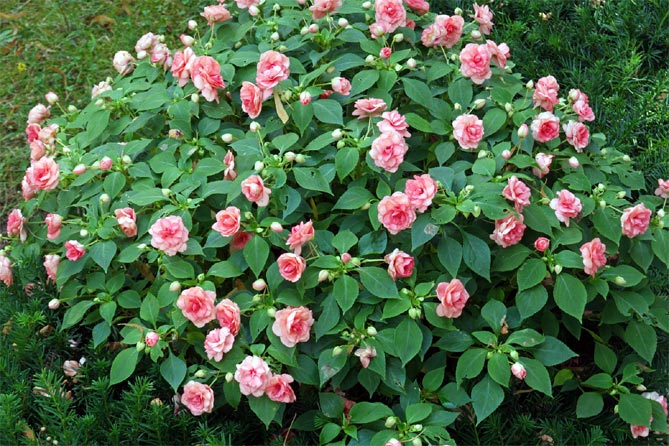

Balsam Hawker (Impatiens hawkeri)
The species grows naturally in exotic New Guinea and the Solomon Islands. In our climatic conditions, touch-me-nots of this variety are bred exclusively in gardens, on balconies or in a house on a windowsill. The plant has a characteristic short stem, typical large flowers with intense color. The most common bloom produces small flowers in color:
- white,
- red,
- orange,
- pink.
The plant loves shade, partial shade. He likes fertile, well-permeable soil. With regular watering and fertilization, it produces lush flowering and intense color of flower petals. To stimulate the best flowering, it is recommended to regularly remove the faded buds.
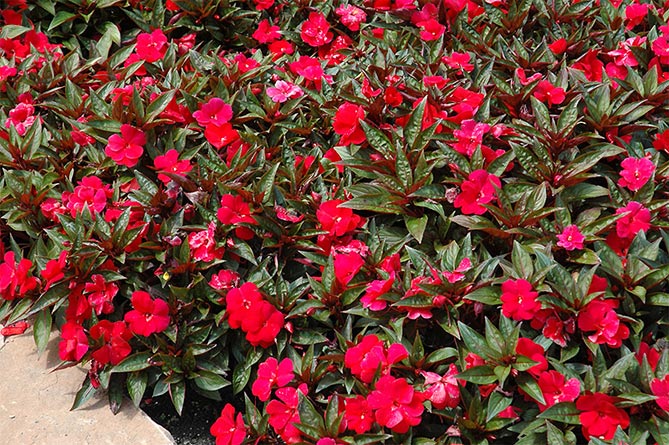

Small-flowered Impatiens Praviflora
It grows naturally in the northeastern part of Asia and in the eastern part of Europe. It grows as a ruderal plant. In the bosom of nature, it occurs along roadsides, streets, in city parks. Small-flowered balsams are not used as ornamental plants, so they do not have varieties. Dies on sunlit lawns. Loves shady places, grows in partial shade. It can grow up to a maximum of 60 cm.
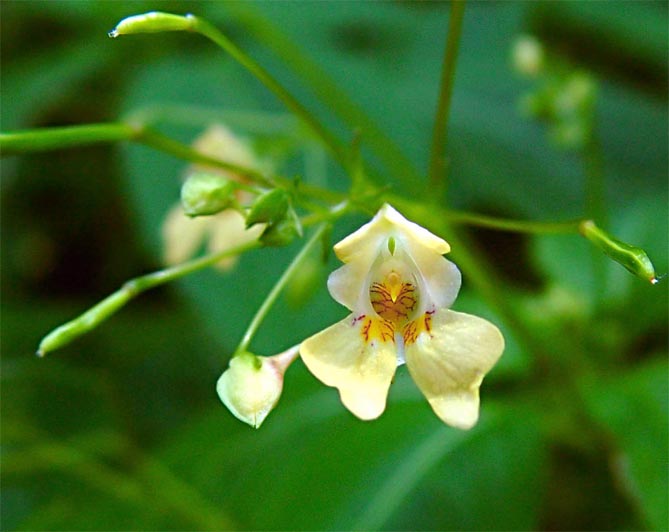

Common touch-me-not (Impatiens noli-tangere)
Common balsam grows in almost every continent in its natural state: Europe, Asia, North America. It can reach a maximum of 180 cm. Annual plants, with the appearance of the first severe frosts, die completely. The touch-me-not has a characteristic thick, strong stem with small roots, small flowers of light yellow and dark yellow color. Balsam multiplies by self-seeding. Prefers a shady position, grows well in close proximity to deciduous and coniferous trees.
Impatiens glandulifera
It is otherwise known as the Himalayan impatiens. In its natural state, it grows in the western part of the Himalayas, transferred to the Old Continent, Asia, North America. Unfortunately, ferruginous balsam turned out to be an invasive flower, actively spreads in river basins, and makes a significant contribution to the elimination of plant diversity.It is cultivated as an ornamental honey plant. Annual flower.
The glandular balsam has a characteristic bare, shiny and slightly thickened stem with a striking red color at the base. The roots are short. Leaves are lanceolate or elliptical. The flowers are strongly ribbed, usually pink in color, but there are also white, maroon flowers.
Ferruginous balsams do not like windy places.
At the turn of March-April, seeds are sown for sowing. Seedlings are planted in the ground, preferably at the end of May. Balsam prefers fertile soil, as moist as possible. The plant is sown by self-sowing.
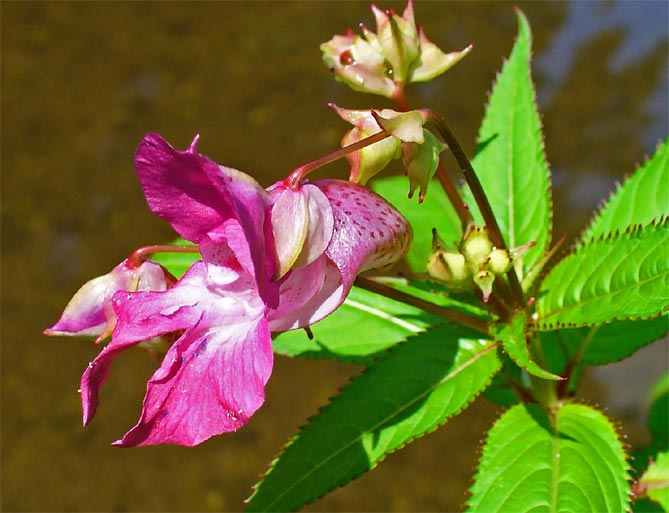

Balsamic (Impatiens balsamina)
The species in its natural state grows in the central part of India, China. In local conditions, the height can reach 70 cm. A more detailed description of the species and varieties is presented below.
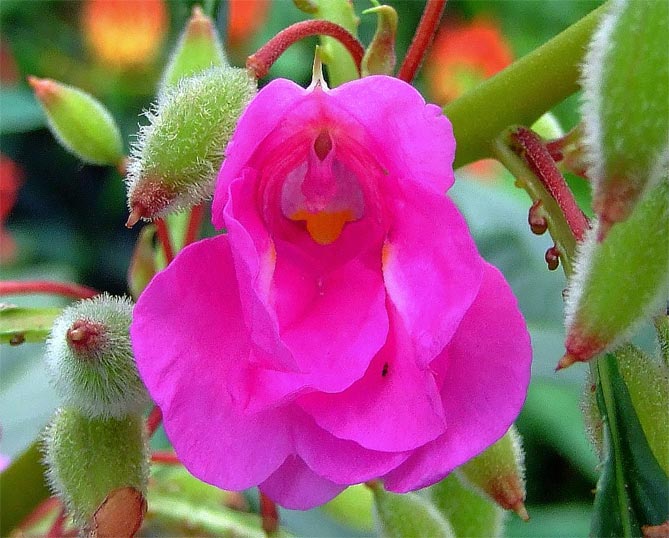

Why doesn't it bloom?
It also happens that a seemingly healthy and beautiful plant that is not susceptible to pests and does not have any signs of disease does not bloom. So, even with perfect care, something went wrong. Here it is important to find out the cause and eliminate it. The reasons may be lack or excess of light, watering, trace elements, temperature changes and much, much more. All this has already been said above, and if all the conditions are met, then there is one more spare advice on the topic of balsam flowering.
Balsam must be trimmed in time and remove old, overgrown and oversized shoots. This is necessary for the formation of new fresh branches, which will begin to give abundant flowering.
Reproduction and transplantation
There are 2 ways to breed balsam.
Cuttings
The method of propagation of a plant by cuttings is very popular, since this process does not cause great difficulties. Cuttings must be prepared by the end of summer. The next step is to place them in water. After some time, the cuttings should take root, after which the process of planting balsam can be carried out.
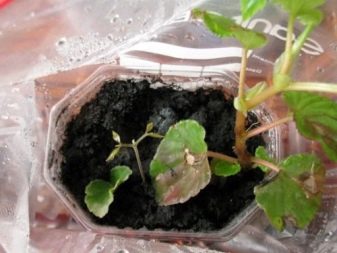

Seeds
Gardeners very often use seeds for growing balsam. After the seed pods turn yellow, you need to collect the seeds for planting. All that is needed for sowing is to prepare a suitable soil. After that, balsam seeds can be safely sown or planted on seedlings. Seeds are planted in a special container. The container is filled with a mixture suitable for balsam, then it should be sprinkled with warm water, after which fertilizer can be added to the planting material.
It is necessary to plant sprouts with a small interval from each other, approximately 4 centimeters. The container is best covered with a lid and placed in a warm place. The optimum temperature will be from +22 to +24 degrees. Occasionally it is necessary to remove condensate from the container After 2 weeks, the plant should sprout, after which it is necessary to reduce the storage temperature to +15 degrees. After the seedlings have reached at least one centimeter in height, the plant will be ready for transplanting.
It is recommended to sow balsam for seedlings in early spring. You can see the result within the first two months.
Balsam: main varieties, proper care and breeding features (55 photos)
Balsam is an indoor and garden pet, known in domestic horticultural circles as Impatiens or Vanka wet, dates back to the family of plant crops brought to us from distant Africa. In the wild, balsam is also found in the subtropics of Asia.
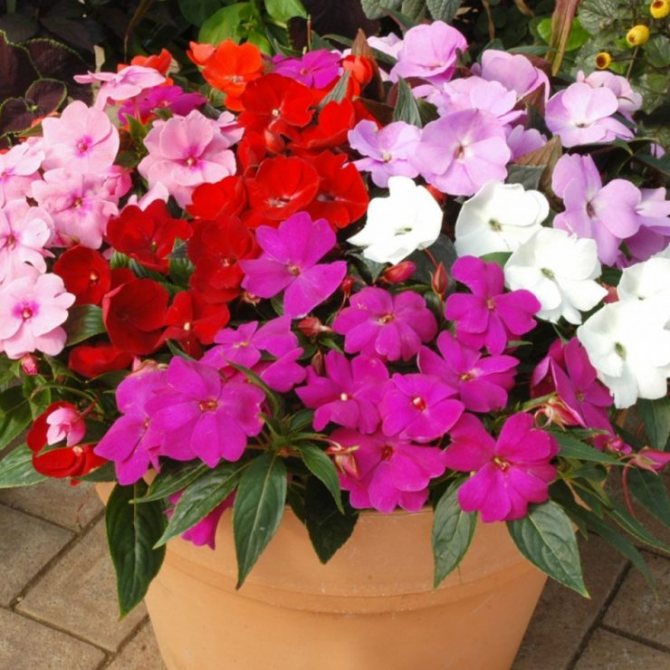

Bright and touchingly delicate balsam flowers create a special coziness in rooms and delight the eye in garden beds. You can count hundreds of different varieties with a variety of colors and shapes of flowers.


How to collect seeds
Procedure:
- first option. Take a small bag, bring it to the box, squeeze the achene so that the oval elements pour out into the container;
- second option. Pick the seeds together with the box.It is important to act carefully, otherwise the contents of the achene will crumble. Gently pinch the box between your fingers, rip it off, grind the dried base, sprinkle the seeds on a sheet of paper to dry.
The finished seed is stored in small paper bags in the absence of dampness. Shelf life with preservation of germination - 8 years.
Vanka's flower wet or garden balsam is an effective decor element for a summer cottage. The variety of varieties allows you to choose the optimal variety of tropical plants without hassle. The flower is quite unpretentious, but the exact implementation of the basic agrotechnical measures is required.
Video - characteristics of garden balsam and useful recommendations for flower growers about the secrets of growing a plant on the site:
History of origin


This flower was brought to Europe in the 16th century. He lived in the tropical forests of Africa, on its eastern shores. Also, the plant can be found in India, England and Ukraine. At first, decorative varieties specially grown for pots were especially popular.
Later, people got acquainted with street types of balsam, which took root on land plots and received its local name - Wet Vanka. This name appeared due to the observation of balsam. Florists noticed that with high humidity, water droplets form at the edges of the leaves. This liquid is secreted by the plant itself. Now balsam is very common throughout our homeland, especially in western and eastern Siberia.
Variety of balsam varieties
Waller's balsam is a perennial plant, reaching half a meter in height with small carpal inflorescences, known for many breeding hybrids with various shades and two-color combinations of red, lilac and orange petals.
Due to its frequent flowering and beautiful juicy leaves of a rich green color, it is especially appreciated by landscape designers.
Peters' balsam is cultivated as a houseplant. All year round it can delight with thick bright red flowers, there are also other shades of petals. The main difference between this variety is bronze leaves.
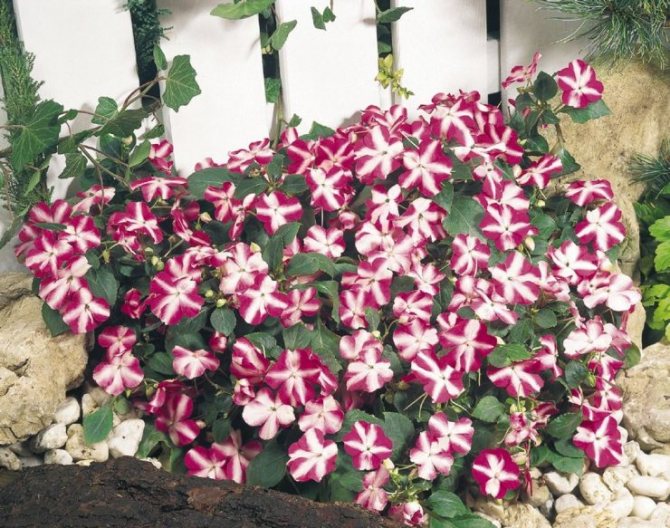

Iron-balsam is an annual plant, reaching a height of 2 meters. It blooms with pink, scarlet and purple flowers forming dense umbrellas. It got its name from the characteristic compaction at the base of the leaves.
New Guinea balsam grows rapidly under moderate climatic conditions and sufficient moisture and blooms several times a year.
Flowers are white, red, lilac and orange. Large bright green leaves come with original yellow highlights.
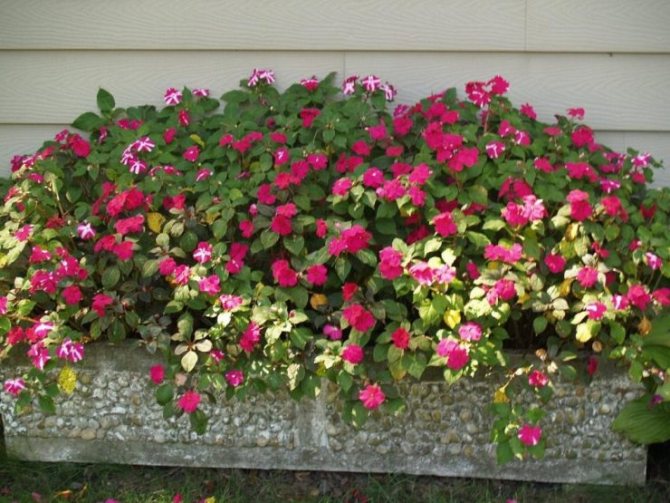

Growing difficulties
This species has certain problems. The most common problems with Waller's balsam are listed below..
- Small, pale leaves. elongated stems. Lack of nutrients, cramped pot, high temperature, lack of lighting.
- Leaves fall off, curl, stems rot. Dampness, low temperature.
- Leaves dry and fall off. Dry air, high temperature.
- Loss of leaf color. Lack of lighting.
- Weak flowering or its complete absence. Lack of lighting, nutrients or excess fertilizers, especially nitrogenous ones.
- Termination of flowering. Frost, cold snap, dry soil, too large pot, wrong transplant time.
You can cope with all these troubles if you pay attention to the condition of the plant in time and take action.
Possible difficulties
Inexperienced flower growers have difficulties in growing this unpretentious plant. How to care for and water the balsam, you need to know in advance, and then such difficulties will not arise. Pulling the stem of a plant can occur if it does not have enough light, or from too hot weather. In this case, the plant should be pruned. If balsam leaves wither, this is a consequence of insufficient watering.It is worthwhile to moisten the soil more often. When the plant is exposed to low temperatures, it can begin to lose leaves. In this case, you need to find a more suitable warm place for him. The handsome balsam has only one drawback - this plant has to be planted again every year, since it is not perennial. But this drawback is absolutely insignificant in comparison with its main advantage - beauty and tireless flowering.
Breeding features
Reproduction of this handsome man occurs in two ways.
SHERENKAMI
This method is very easy. Balsam tolerates cuttings well. It quickly takes root and is accepted in a new place. This can be done at any time of the year, but it is still better in spring or early summer, so that the flower has time to please you with its beauty.
You need to cut off a stalk 4-6 cm long. Make sure there are at least 3-5 leaves... Remove the lower leaves and place the cuttings in a glass of water. Place the glasses in a dark and warm place. After the roots appear (approximately it will take about 10 days), they can be planted. If it's still cold outside, plant in pots, then harden, and only then plant in the garden. If it's already warm enough outside, you can plant the cuttings immediately in the open air. Freshly planted cuttings are very prone to rotting. Moderate watering!
SEEDS
In February and early March, sowing is carried out in seedling containers filled with special soil. An earthen mixture is prepared from equal parts of garden soil, peat and coarse sand. It should be lightweight and breathable.
The seeds are laid out from each other at a distance of 3-4 cm. The soil is sprayed with warm water and covered with glass or polyethylene... The result is a mini greenhouse in which seedlings will grow together. The containers are placed in a warm place, the soil is ventilated daily.
As soon as the first shoots appear, the seedlings are exposed in a well-lit place.
When 2-3 true leaves appear, the plants dive into separate cups. The stems and roots of balsams are very fragile, so the transplant is done carefully. As soon as the bushes grow and 6-8 leaves appear on them, you can pinch them. In this case, the roots will become stronger and the plant lush.
If you don't want to mess with seedlings, then planting and grooming can be done in the open field immediately... Seeds are sown after the last frost in a previously prepared soil and covered with polyethylene or acrylic on top. The seedlings should emerge in about 5-7 days.
Handsome, good, bright, especially unpretentious. All these qualities can be attributed to garden balsam. It has been loved and grown by flower growers for several centuries. Breeders continue to work on the development of new hybrid varieties of amazing beauty. In different countries he is given different names so that he becomes closer to their people.
The widest variety of species and varieties of balsam exists both for home cultivation and for cultivation in the open field in personal plots. For you, we have prepared a number of articles about this amazing and beautiful flower:
- New Guinea: touch-me-not from Africa, especially cultivation and care.
- Iron-bearing: description, features and medicinal properties of a wild-growing variety.
- Tom Samb pink balsam: growing on a windowsill.
- Waller: description and difficulties in growing.
- Ferruginous: the rules of planting and care, disease varieties.
- Wild: how to grow in the garden, how is this touch-me-not useful?
- Ampelny: all about the variety, growing in the house.
- Vanka wet: description, features, cultivation and diseases.
- Terry: varieties and features of cultivation and care.
If you decide to get these flowers, go for it! With the right care, you will definitely not regret it.
What is the difference between a street touchy and a room touch?
At first glance, it is easy to distinguish garden balsam from domestic relatives. No special knowledge is needed here.It grows on the street and has a looser, as if transparent, bush. This becomes especially noticeable if ultraviolet light gets on the plant. Garden varieties bloom predominantly in yellow shades, while indoor varieties have a huge variety of colors.
Street varieties are believed to have medicinal properties... Garden balsam is actively used in folk medicine and helps to cope with many ailments. The bulky fleshy parts of the leaves contain ascorbic acid, many organic substances and flavonoids - plant substances with antioxidant properties. Domestic varieties do not have such features.
Another important difference between outdoor balsam and home balsam is that the first flower is an annual. But its beauty and the lights of flowers scattering along the crown compensate for this deficiency in full.
Professional advice
Every gardener has their own plant care secrets. According to professionals, it is very easy to achieve a high-quality result when cultivating Waller's balsam shrubs. To do this, you must follow simple rules.
- Moderate watering. It is undesirable to oversaturate the plant with moisture, since waterlogging negatively affects its root system.
- Do not forget to periodically collect faded flowers from the plant. This will enable the plant to continuously give new color. And also it will prevent the formation of seed pods in a huge amount.
- In order to properly care for the plant, it is recommended to purchase suitable stimulants for the growth and flowering of balsam. And also professional gardeners advise from time to time to feed it with various mineral fertilizers.
- In the middle of autumn before the onset of cold weather it is necessary to cover the plant with a special material. As for the balsam, which is planted in a decorative pot, then it must be transferred to a warmer place.
- For Waller's balsam is strongly discouraged. transplant into a container during the cold seasons. In this situation, the chance that the plant will be able to survive is minimized.
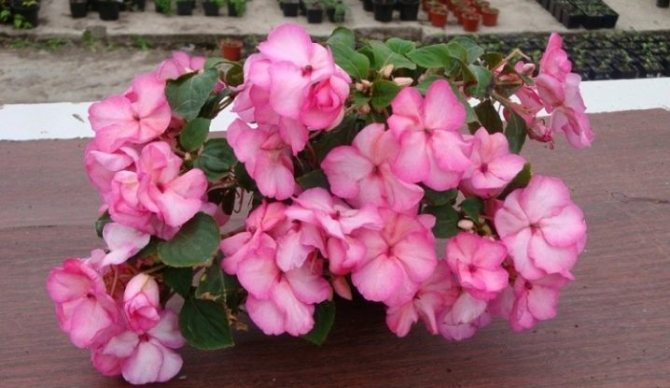

You can find out the secrets of successfully growing Balzamin Waller by watching the video below.


Balsam is an ornamental plant that is widespread in modern garden plots. A wide range of colors of flowering parts and a rich selection of their shapes enable designers and florists to make almost any composition and landscape solution based on the plant.
Planting and caring for balsam can be performed even by novice gardeners, since the plant, despite the fact that it is grown here as an annual, is quite hardy and unpretentious.
Waller's balsam: sowing and growing
author Ziborova E.Yu., photo of the author
Balsams are now rightfully included in the list of the most popular, attractive and long-flowering plants that grow successfully in the home and garden.
Among the several types of balsam that are often used in indoor floriculture and landscape design, Waller's or Waller's balsam (Impatiens walleriana) is very popular among flower growers. By its nature, it is a very thermophilic perennial, and in regions with cold winters, it is grown as an annual.
Modern selection of balsams demanded by flower growers works wonders - a great many varieties and hybrids of Waller's balsam have been created with a variety of flower colors (simple, semi-double or double). This prompts fans of this plant to collect an extensive collection of balsams.
Dwarf varieties and hybrids of Waller's balsam are about 15-20 cm in height, and in medium-sized plants, the height is 30-35 cm. Compact plants have a lush bush with rich green leaves and juicy shoots, the tops of which are abundantly covered with charming flowers of one-color or two-color color.
I will share with the readers of the site my experience of growing Waller's balsam from seeds and using this plant to decorate the garden.
Balsam varieties
Balsam variety Tom Tamb
This variety is grown as an annual plant due to the small biological growth of the plant. The height of mature shrubs reaches only 25-30 centimeters. Lanceolate leaves, painted in bright green. The trunk of the bush and branched branches are well developed, the deciduous mass is abundant, dense. On the top of the voluminous green ball, double white, red, purple, lilac and pink flowers bloom, which have a wonderful persistent aroma. The plant belongs to the camellia variety and has a pyramidal bush shape. These varieties are recommended to be planted along the edge of the flower bed, forming a curb or hedge.
Waller balsam variety
A very diverse, annual variety. On the bushes of this species, both double and simple flowers can bloom at the same time. The color range of the buds is also different. Small green balsam bushes, reaching no more than 30 centimeters in length, are decorated with multi-colored flowers, monochromatic and with different blotches and stripes that have an excellent aroma. Planted as curb varieties along the flower bed.
Balsam variety Exotic dwarf
Grown as perennial and annual flowers. In appearance, these are small bushes, no more than 20 centimeters high with serrate, lanceolate leaves and multi-colored flowers. There are purple, lilac and pink flowers. The buds of various shapes, filled with petals, have a pleasant aroma. This variety is recommended to grow to decorate balconies, open terraces, window sills.
Balsam variety Tom Samb purple
The presented variety is grown as an annual plant. The height of balsam bushes is no more than 20 centimeters. The color of the leaves is dark green. Blooms throughout the summer with double purple flowers. Has a long-lasting pleasant aroma. Recommended to grow as a curb option.
Balsam variety Tom Samb two-color
Grown as an annual plant. The bushes are small, up to 20 centimeters in height, the leaves are medium-sized, bright green. Scattered across the deciduous mass are white-red, small, double flowers, with a heady, attractive aroma. Recommended for growing as a curb variety. This variety is planted along the edges of the flower bed, on balconies and window sills.
Popular perennial and annual species and varieties of balsam
More than five hundred species are united in the genus. However, in the conditions of decorative floriculture, only a dozen and a half dozen species are used, which are characterized by long flowering, relative unpretentiousness in growing, as well as highly decorative appearance:
- "Stаrdust" and "Frosty" - with a white spot in the central part of the flower;
- Symphоny"- compact undersized and early flowering culture with large flowers;
- "Futura" - ampel type, early and abundantly blooming bright variety;
- "Surer Elfin" - undersized plant, presented in a wide range of colors;
- "King-Kong" - a little more than a quarter of a meter tall, large-flowered, with abundant flowering;
- "Nоvette" - compact type, with a very long flowering period;
- "Сonfestion", "Double Duet" and "Rosette" with double and semi-double flowers;
- "Fiesta" - perennial with very decorative double flowers;
- "Fаnsiful Trоrісal" - with semi-double bright flowers.
The varieties belonging to the group are also very popular. "Sandy" or Kandy, consisting of seventeen varieties, including "Stаrdust Lаvender".

